

Essay on Digital Citizenship
Students are often asked to write an essay on Digital Citizenship in their schools and colleges. And if you’re also looking for the same, we have created 100-word, 250-word, and 500-word essays on the topic.
Let’s take a look…
100 Words Essay on Digital Citizenship
What is digital citizenship.
Digital Citizenship is about using the internet and digital devices in a responsible and respectful manner. It’s like being a good citizen in the digital world. We should use technology in a way that doesn’t harm others and helps us learn and grow.
Why is Digital Citizenship Important?
Digital Citizenship is important because we spend a lot of time online. We learn, play, and talk with friends on the internet. Being a good digital citizen helps us use the internet safely and respectfully. It also helps us understand the impact of our actions online.
Elements of Digital Citizenship
There are several parts to being a good digital citizen. These include understanding digital etiquette, knowing how to stay safe online, respecting other people’s digital rights, and being aware of your digital footprint. All these elements help us use technology in a positive and responsible way.
Role of Schools in Digital Citizenship
Schools play a big role in teaching digital citizenship. They help students understand how to use technology responsibly. Schools also teach us about the dangers of the internet and how to avoid them. This helps us become better digital citizens.
250 Words Essay on Digital Citizenship
Understanding digital citizenship.
Digital Citizenship is about how we behave online. It’s like being a good citizen in the real world, but in the digital world. We need to know how to use the internet and digital tools safely, respectfully, and responsibly.
Importance of Digital Citizenship
The digital world is a big part of our lives. We use it to learn, play, and talk with friends. But just like in the real world, there are rules we need to follow. Being a good digital citizen means following these rules. This will keep us safe and help us use the internet in a good way.
Aspects of Digital Citizenship
There are many parts to being a good digital citizen. One part is online safety. This means keeping personal information private and not sharing passwords. Another part is being respectful online. This means not bullying or hurting others with words or actions. A third part is using the internet responsibly. This means not stealing or copying other people’s work.
Schools play a big role in teaching digital citizenship. They can teach us about online safety, respect, and responsibility. They can also help us learn how to use digital tools in a good way. This will prepare us for a world where the internet is a big part of work and life.
Being a good digital citizen is important. It helps us stay safe, respect others, and use the internet in a good way. Schools can help us learn about digital citizenship. This will prepare us for a world that is more and more digital.
500 Words Essay on Digital Citizenship
In today’s world, we spend a lot of time online. We use the internet for school, to talk to friends, and even to play games. But just like in the real world, there are rules we need to follow. These rules help to keep us safe and make sure we are being kind to others. That’s why understanding digital citizenship is so important.
Staying Safe Online
One of the key parts of digital citizenship is knowing how to stay safe online. This means not sharing personal information like your address or phone number with people you don’t know. It also means being careful about clicking on links or downloading things from the internet. These could be tricks to get your information or harm your computer.
Respecting Others
Positive use of digital tools.
Digital citizenship also includes using digital tools in a positive way. This could mean using the internet to learn new things or to help others. It could also mean creating things like art or music using digital tools. The key is to use these tools to make the world a better place, not to harm others or break the rules.
In conclusion, digital citizenship is a very important part of our lives. It helps us to stay safe online, respect others, and use digital tools in a positive way. By understanding and following the rules of digital citizenship, we can make the internet a better place for everyone.
If you’re looking for more, here are essays on other interesting topics:
Apart from these, you can look at all the essays by clicking here .
Leave a Reply Cancel reply
Save my name, email, and website in this browser for the next time I comment.


- Board And Staff
- Founder Isabelle Vladoiu
- Regional Directors
- All Courses
- Accreditation
- Digital Batch & Certification
- Professional Consultant
- Edu For Every Child
- Let Her Lead Program
- HRB Academy
- Nobody Left Behind
- Religious Freedom
- Rebuilding Ukraine Forum
- Disability Rights Summit 2022
- Youth Summit 2022
- Diplomacy And Human Rights2021
- Diplomacy And Human Rights2020
- Business Etiquette Secrets
- Human Rights Book
- Human Rights Coloring Book
- Blog Articles
- Volunteering
- Affiliate Program
- Religious Freedom Program
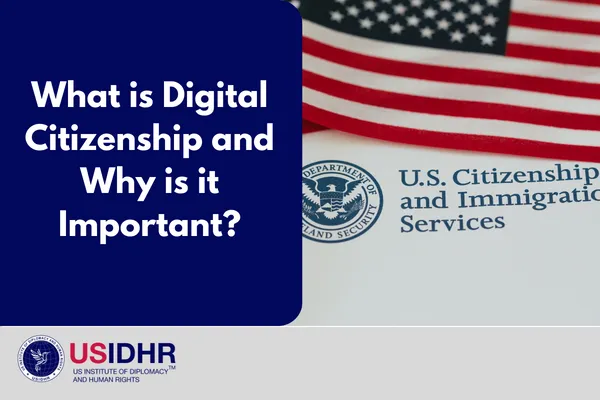
What is Digital Citizenship and Why is it Important?
May 26, 2022 by usidhr.org
The Covid-19 pandemic led to business and school closures which increased technology use for telework and online learning. Technology use is continuing to rise and it is increasingly important to be knowledgeable about how to use it correctly. Digital Citizenship is a way for business leaders, educators, governmental workers, and advocates to understand how we should use technology appropriately. Dr. Mike Ribble believes it’s “more than just a teaching tool, it is a way to prepare students for a society full of technology”[9]. With the correct use of the internet, students and adults can be more aware of human rights violations and how to protect themselves from fraud and disinformation. This article will cover the topics of technology, the importance of digital citizenship, and its implementation in society.
What is the impact of technology on youth?
Technology has had an enormous impact on a student’s learning. For example, it allowed them to have easy access to a larger amount of resources, it encouraged self-paced learning, it prepared them for careers in the tech industry, it improved their multitasking and problem-solving skills, and it can be used as a classroom tool to help students learn in new ways. With the rise of technology, children have started to use it from a very young age. According to the American Academy of Pediatrics, children between the ages of 8-10 years old spend 8 hours per day on technology, while teenagers spend more than 11 hours per day[1]. Many kids have computers and tablets at home before they start school, but elementary schools also have the option of online learning because it provides more independence and flexibility to a student’s learning. Recently, due to school closures, many students reverted to online learning and that led to an increase in technology use. According to Pew Research Center, 93% of parents with children from kindergarten to 12th grade said their children had online learning during the pandemic[13]. Among these parents, 62% report that the online learning was very successful[13]. While young people have increased their use of technology in schools, they also spend a lot of their time on social media. According to the American Academy of Child & Adolescent Psychiatry, 51% of teens between the ages of 13-17 use social media daily[15]. Social media platforms are often used as a news source by young people, so it is important to consider social media in Digital Citizenship Education.
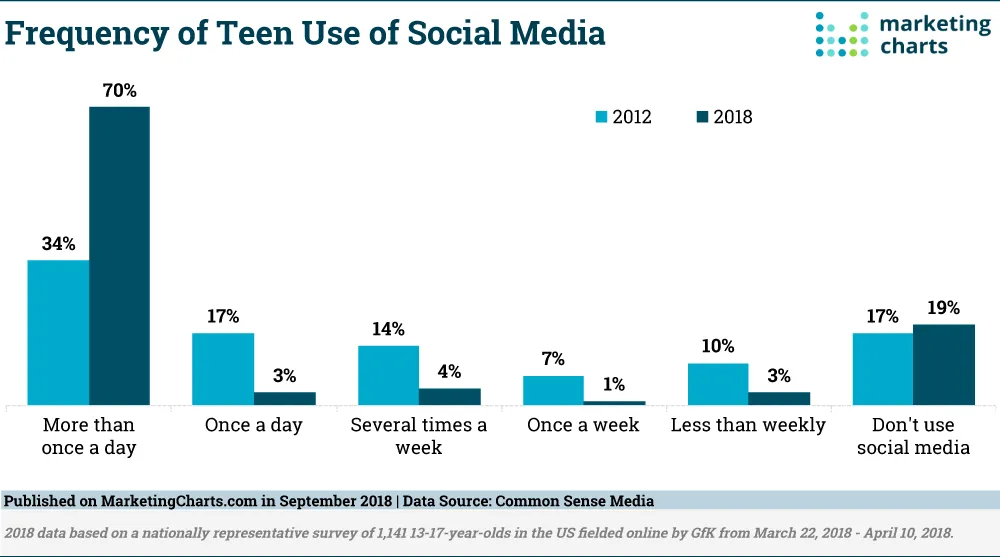
Source: Marketing Charts

Source: Pew Research Center
Digital citizenship.
What is Digital Citizenship? Digital Citizenship teaches individuals how to engage and participate in responsible ways of using technology, in order to protect themselves from internet dangers and respect each other’s human rights. According to the Council of Europe, digital citizenship can be defined as:
“The competent and positive engagement with digital technologies (creating, working, sharing, socializing, investigating, playing, communicating, and learning); participating actively and responsibly (values, skills, attitudes, knowledge) in communities (local, national, global) at all levels (political, economic, social, cultural, and intercultural); being involved in a double process of lifelong learning (in formal, informal, and non-formal settings) and continuously defending human dignity”[4].
It is important to note that Digital Citizenship allows citizens to use technology and humanity in a thoughtful and empathetic manner. In 2017, the Alaska Department of Education and Early Development (DEED) organized the first “Alaska Digital Citizenship Week” where they encouraged schools to implement education technology. It was held again the following year and it became a very popular program throughout the state, thus encouraging teachers to be the main guide for students and their families into developing their safety awareness in the digital world[8].
Why is digital citizenship important?
In 2021, The Federal Trade Commission received 2.8 million fraud reports[10]. With the large number of news and media sources, there is a rise in fraud, misinformation, and disinformation. This is why it is important that people choose credible and valid sources. According to a Research led by Stanford History Education Group director Joel Breakstone, PhD, and co-authored by Wineburg, out of a sample of 3,446 students from 14 different states, less than 10% verified an online source’s credentials with a quick web search[11]. Fraudsters and sources spreading misinformation and disinformation take advantage of people without technological knowledge. Digital Citizenship Education is necessary because it protects others from being vulnerable to these issues.
Digital Citizenship Education
Digital Citizenship Education encourages individuals to use their knowledge, skills, and understanding to protect and promote human rights online, such as freedom, privacy, and security. In this way, people become more aware of internet safety. This is because digital citizenship education teaches us how to use the internet responsibly and safely, and how to protect ourselves from fraudsters and predators.
In Canada, 99% of students from 4th to 11th grade use the internet at home[9]. With the rise of technology users, this shows the importance of being knowledgeable about fraud, misinformation,
and disinformation. As a result, Digital Citizenship Education was implemented in Saskatchewan Schools, in order to support the appropriate and responsible online activity of Kindergarten to 12th Grade students. As seen with the evidence above, fraud, misinformation, and disinformation are on the rise and it is vital to be taught how to protect yourself from these common online problems.
Conclusion:
With the rise of technology use, Digital Citizenship Education is very important because it teaches citizens to use technology in order to engage respectfully online, to find reliable online sources and to avoid the violation of human rights. This can be achieved with schools and businesses implementing programs which will encourage people to expand their technological knowledge and promote human rights online.
Reference list:
[1] Strasburger, Victor C., Marjorie J. Hogan, Deborah Ann Mulligan, Nusheen Ameenuddin, Dimitri A. Christakis, Corinn Cross, Daniel B. Fagbuyi, et al. “Children, Adolescents, and the Media.” American Academy of Pediatrics. American Academy of Pediatrics, November 1, 2013. https://publications.aap.org/pediatrics/article/132/5/958/31699/Children-Adolescents-and-the-Media .
[2] “How Technology in the Classroom Can Impact Student Learning.” Top Hat, May 10, 2022. https://tophat.com/blog/how-does-technology-impact-student-learning/ .
[3] Western Governors University. “Impact of Technology on Kids Today and Tomorrow.” Western Governors University. Western Governors University, August 25, 2020. https://www.wgu.edu/blog/impact-technology-kids-today-tomorrow1910.html#close .
[4] “Digital Citizenship and Digital Citizenship Education.” Digital Citizenship Education (DCE). Accessed May 19, 2022.
[5] “Digital Citizenship in Education.” ISTE. Accessed May 19, 2022. https://www.iste.org/areas-of-focus/digital-citizenship .
[6] “The State of Privacy in Post-Snowden America.” Pew Research Center. Pew Research Center, August 17, 2020. https://www.pewresearch.org/fact-tank/2016/09/21/the-state-of-privacy-in-america/ .
[7] Schoology. “4 Benefits of Digital Citizenship for Internet Safety.” Schoology. Schoology, April 2, 2019. https://www.schoology.com/blog/4-benefits-digital-citizenship-internet-safety .
[8] Jordan, Sam. “Empowering Communities through Teaching Digital Citizenship.” Association of Alaska School Boards, November 18, 2018. https://aasb.org/empowering-communities-through-teaching-digital-citizenship/ .
[9] Couros, Alec, Hildebrandt, Katia. “Digital Citizenship Education in Saskatchewan Schools.” Accessed May 19, 2022. http://iamstronger.ca/userdata/files/244/DC%20Guide%20-%20ENGLISH%20WEB.pdf .
[10] Staff, the Premerger Notification Office, and This blog is a collaboration between CTO and DPIP staff and the AI Strategy team. “New Data Shows FTC Received 2.8 Million Fraud Reports from Consumers in 2021.” Federal Trade Commission, February 22, 2022. https://www.ftc.gov/news-events/news/press-releases/2022/02/new-data-shows-ftc-received-28-million-fraud-reports-consumers-2021-0 .
[11] Pappas, Stephanie. “Fighting Fake News in the Classroom.” Monitor on Psychology. American Psychological Association. Accessed May 19, 2022. https://www.apa.org/monitor/2022/01/career-fake-news .
[12] “Educational Researcher – Volume 50, Number 8, Nov 01, 2021.” Accessed May 19, 2022. https://journals.sagepub.com/toc/edr/50/8 .
[13] McClain, Colleen, Emily A. Vogels, Andrew Perrin, Stella Sechopoulos, and Lee Rainie. “The Internet and the Pandemic.” Pew Research Center: Internet, Science & Tech. Pew Research Center, April 28, 2022. https://www.pewresearch.org/internet/2021/09/01/the-internet-and-the-pandemic/ .
[14] “What Is Digital Citizenship?” Avast. Accessed May 20, 2022. https://blog.avast.com/what-is-digital-citizenship-avast .
[15] Aacap. Social Media and teens. Accessed May 23, 2022. https://www.aacap.org/AACAP/Families_and_Youth/Facts_for_Families/FFF-Guide/Social-Media-and-Teens-100.aspx .
Join One of Our Certificate Trainings:
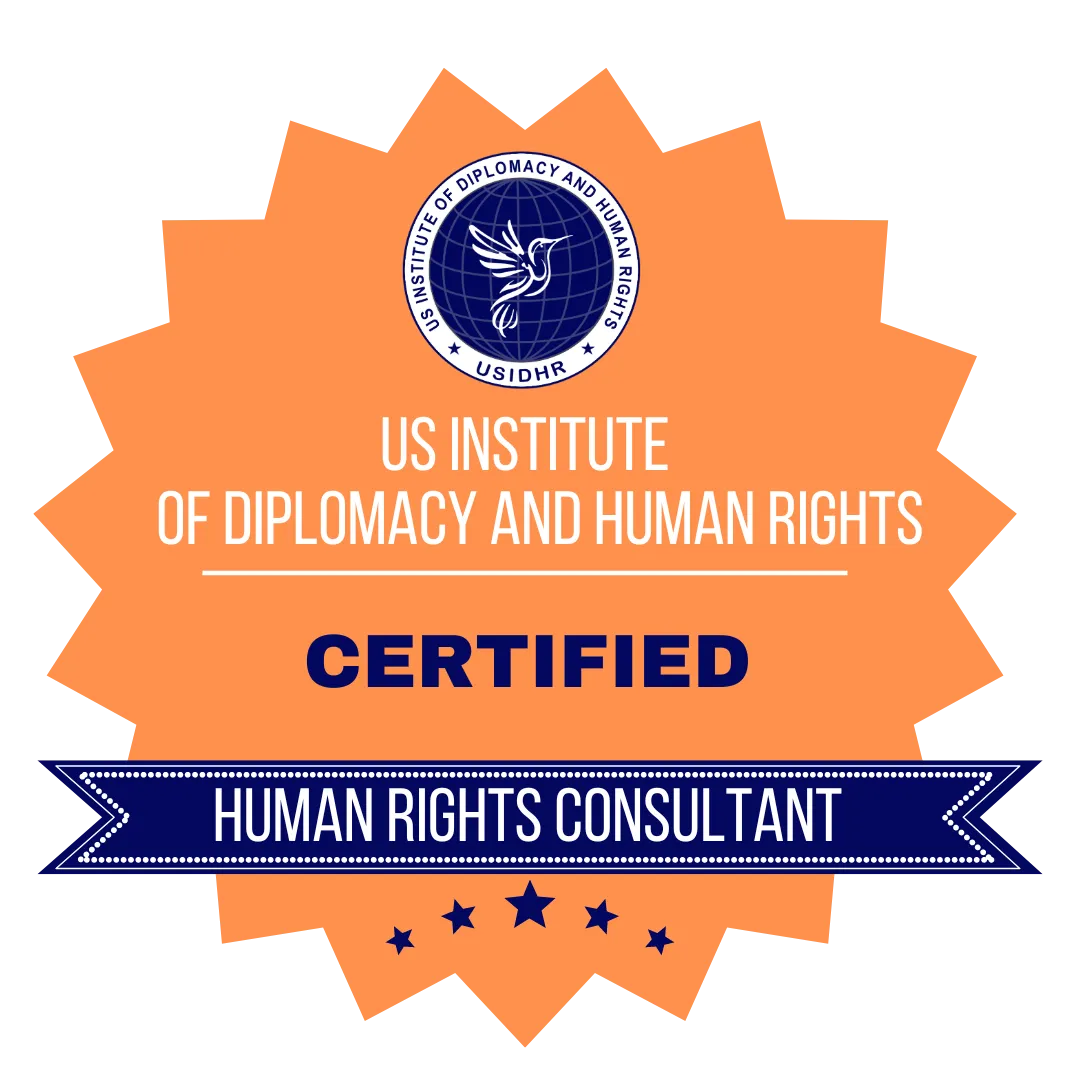
Human Rights Education Certification Training

Human Trafficking Certification
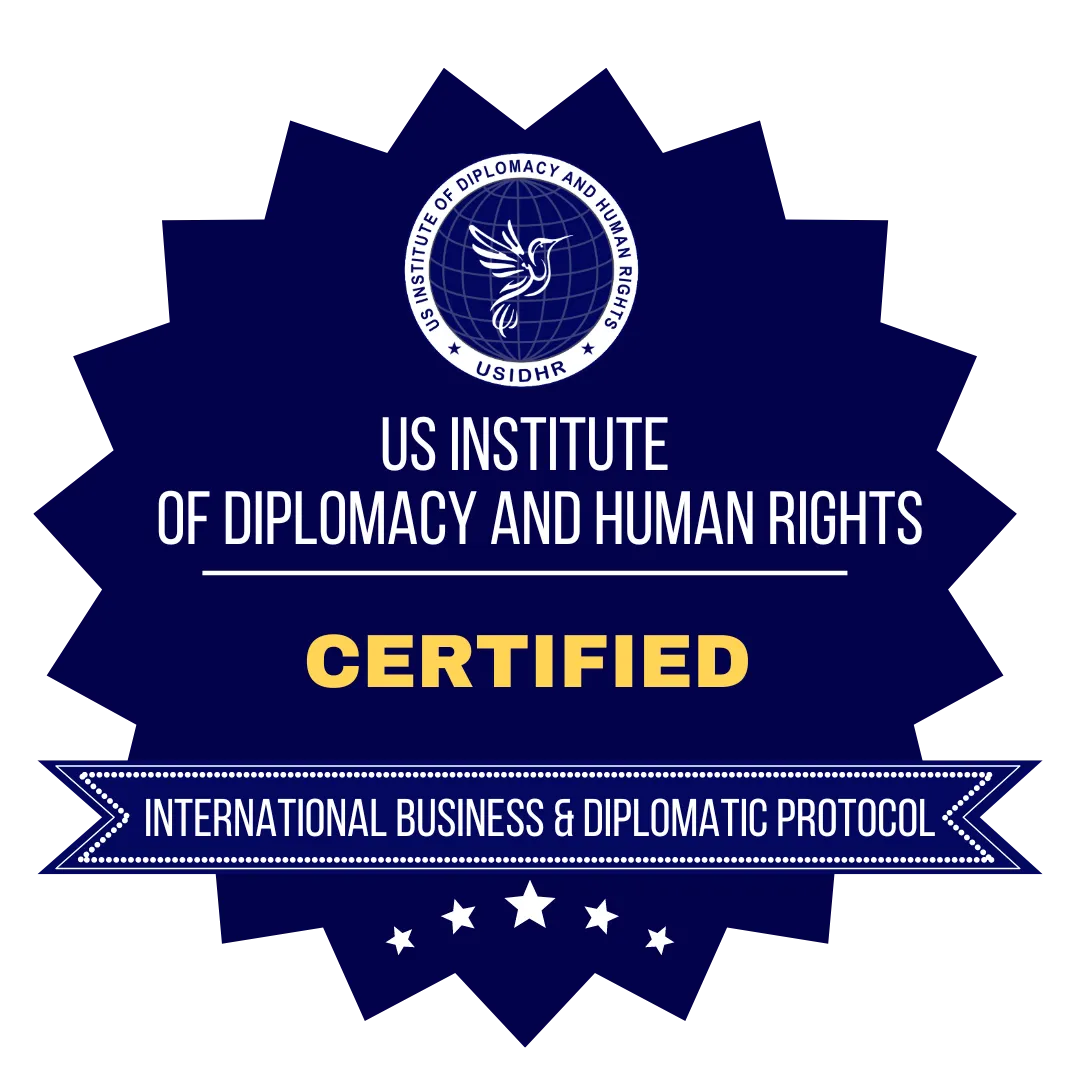
International Business and Diplomatic Protocol Certification

Capacitación En Derechos Humanos
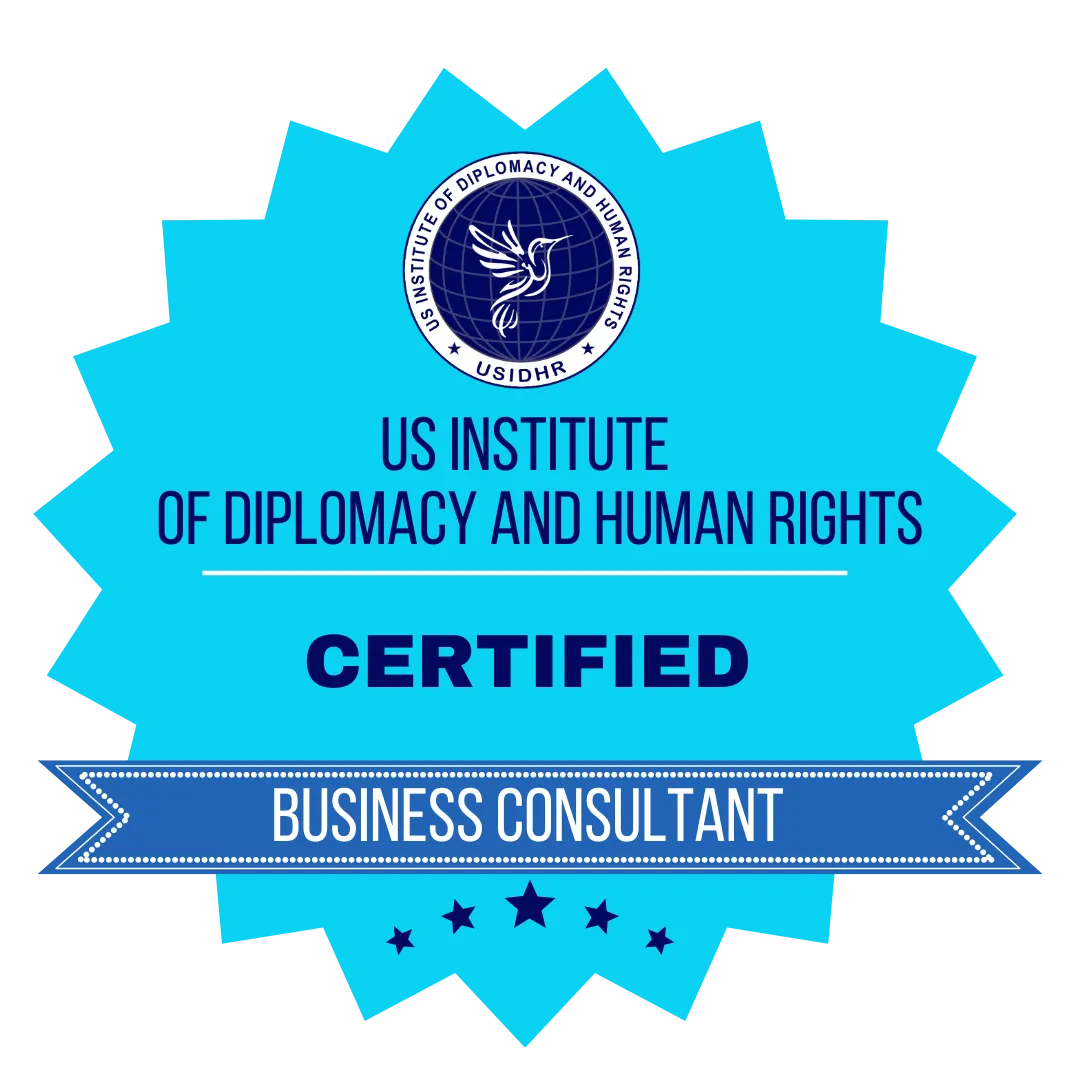
Business Consulting Certification Training
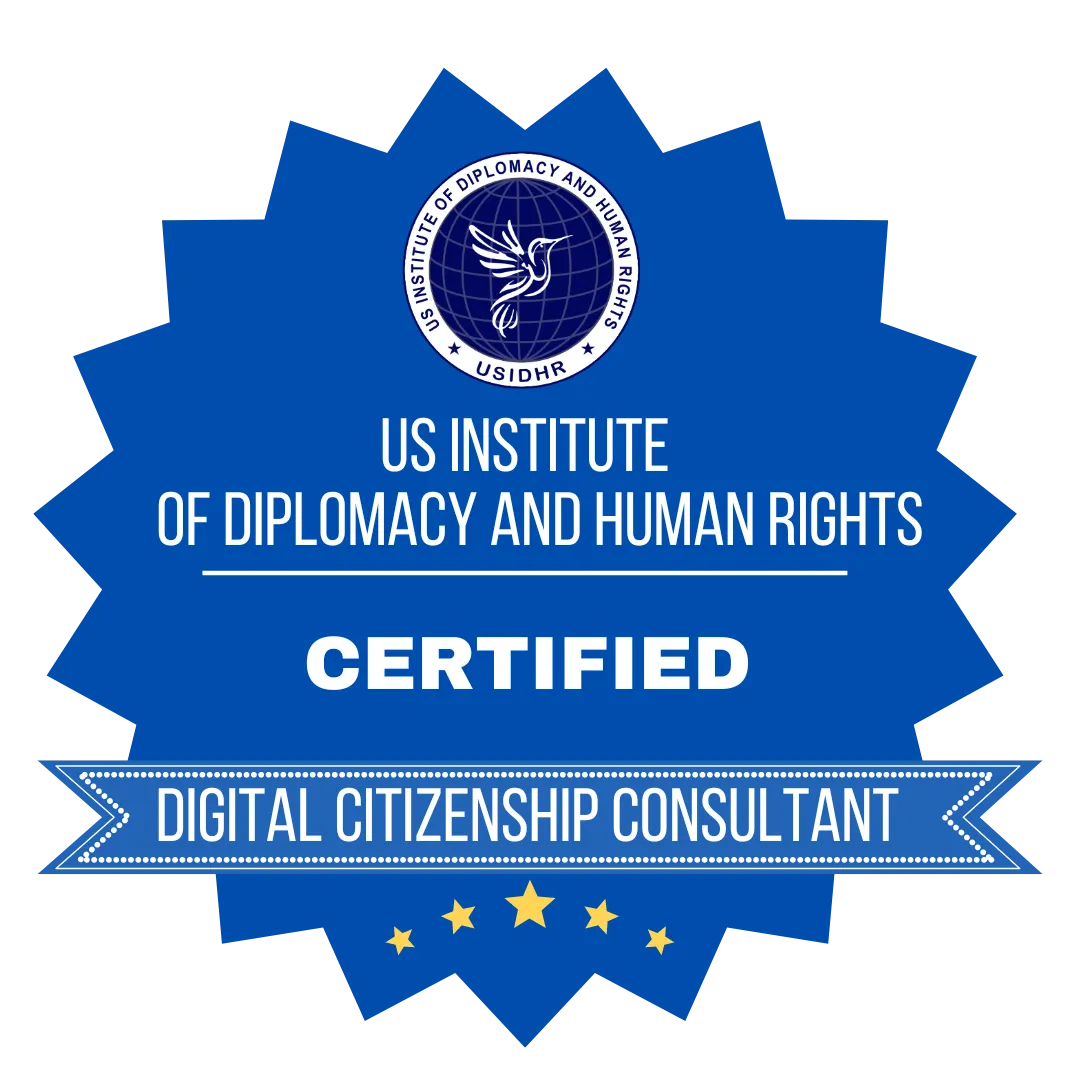
Digital Citizenship Certification
Other blogs you may like:.

What is meant by Open Diplomacy?

Youth-Led Diplomacy in International Organizations

How Can Youth Get Involved In Diplomacy?
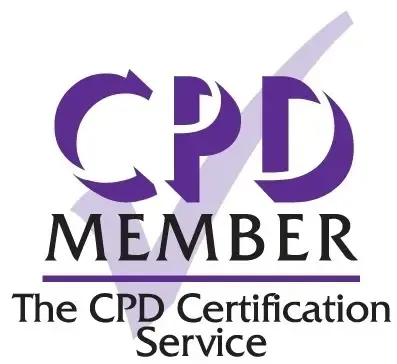
The US Institute of Diplomacy and Human Rights (USIDHR) is an International Continuing Professional Development (CPD) Accredited Organization. Accredited CPD training means the learning activity has reached the required Continuing Professional Development standards and benchmarks. The learning value has been scrutinized to ensure integrity and quality. The CPD Certification Service provides recognized independent CPD accreditation compatible with global CPD requirements

US Institute Of Diplomacy And Human Rights
1250 Connecticut Ave NW Ste 700, Washington, DC 20036
Email support at: [email protected]
USA Phone: +1(202)-505-7707

Digital Citizenship Is About a Whole Lot More Than Online Etiquette

- Share article
Over the years, I’ve fallen in and out of love with the idea of “digital citizenship.” For me, the term still evokes the promise of empowered, online civic action. But so often, in practice, what’s implemented in our schools as “digital-citizenship education” is watered down to a list of dos and don’ts for young people that is hyperfocused on etiquette, warnings about “stranger danger,” and the need to be kind online.
This certainly proved true this spring, in the transition to emergency remote education. I started seeing infographics describing how students might demonstrate digital citizenship in Zoom class meetings. Tips included turning their cameras on, making eye contact, and not eating during the meeting.
I, like so many educators and other professionals, practically lived on video-conferencing platforms this spring. And I didn’t follow those rules. I don’t always keep my camera on (hello, schoolwide faculty meetings!) and I certainly do sometimes have a bite to eat during a meeting, especially on those back-to-back-to-back Zoom days. But I still contributed meaningfully to those spaces.
If those dos and don’ts don’t even accurately describe “professional online etiquette,” why are we holding them up as a model for students to emulate as if that’s what good digital citizenship looks like?
This is just one example of a larger pattern: Digital-citizenship conversations tend to focus almost exclusively on establishing appropriate user behavior. The problem is that this framing papers over the actual challenges of participating in online spaces. In 2020—amid the ongoing debate over content-moderation policies, distrust of expertise, conspiracy theorizing, growing attention on algorithmic bias, and radicalization by digitally savvy far-right communities—our problems online aren’t just the result of users not being polite enough to each other.
We need to move beyond a moralizing digital-citizenship education and toward an ecologically-minded one."
In fact, many examples from the last several months have demonstrated the true complexities of participating online as digital citizens. An early spate of Zoombombing (in some instances, horrifically offensive and potentially traumatic) focused our attention on technical security failures and the need for informed user controls. Students of color have exposed their experiences of racism at private high schools via anonymous social-media sharing, spurring difficult conversations on campuses. Facebook and YouTube claim they’re taking swift action against false information about COVID-19, but networked misinformation campaigns have successfully sidestepped these policies to spread harmful medical advice and sow the seeds of distrust of a future vaccine.
Young Black creators who are turning to TikTok to share content in support of Black Lives Matter not only suspected the platform of suppressing their activist content but also faced racist feedback from other users. (The future of TikTok for American teenagers has grown even more complicated in recent weeks, as President Donald Trump ordered a ban on the app beginning in September—if the inevitable legal challenges from the company fail.)
We’ve seen online organizing co-opted, in one instance by gun-advocacy and -lobbying groups to appear like a grassroots “reopen the economy” movement. In another instance, K-pop fans and TikTok users took credit for the low attendance at Trump’s Tulsa rally in June, after reportedly coordinating to reserve thousands of tickets under fake names. And amid all of this, sudden remote learning has highlighted inequalities in home internet access .
The dominant messages of digital-citizenship education repeated year after year—be kind, THINK before you post, beware of strangers, and, now, don’t eat on camera—do not prepare students to grapple with the type of participation that these examples illustrate. In fact, they miss the point entirely.
How, then, might we redefine digital-citizenship education to meet this moment?
The key might be in where we put our emphasis. In her book Disconnected: Youth, New Media, and the Ethics Gap , sociologist Carrie James draws a distinction between moral and ethical thinking: While moral thinking considers those close to us, ethical thinking demands “the capacity to look beyond one’s own interests, feelings, and empathy for close relations in order to make decisions that are in the interests of a larger group, public, or society.”
The dilemmas users encounter online require this more abstract ethical thinking, yet popular digital-citizenship messaging focuses almost entirely on moral thinking.
The problem is that doing so trains students’ digital senses to only notice the intentional, immediate, or known impact of their choices. In reality, we may never know the impact of our actions online; we may never see where our content travels or understand how that meme we shared has been weaponized by others to target communities we aren’t a part of.
Ecological metaphors may better describe the digital landscape. “Our network connections are as dense and robust as redwood root systems,” writes communications professor Whitney Phillips . “So, in addition to everyday best practices, we must also critically reflect on why the forest looks the way it does, how it was allowed—indeed, how it was encouraged —to become so polluted, and when these particular trails were blazed, by whom, and at whose expense.”
To meet the needs of 2020, we need to move beyond a moralizing digital-citizenship education and toward an ecologically-minded one, one that not only asks students to deeply consider the many and varied implications of their own actions but also how the digital tools and platforms we use create an environment that encourages or discourages truly ethical and equitable participation. In other words, digital citizens must learn to not only be concerned with their own individual actions but also in how these actions fit together and interact within the larger ecosystem. Which means they also need to understand how that ecosystem works .
Of course, that is a more complicated conversation to have. But without this understanding of digital citizenship education, we are not preparing young people to navigate our increasingly digitally-mediated world.
The first step is simple: Let’s stop calling conversations about etiquette and appropriate behavior “digital citizenship,” because it’s not.
True digital citizenship must be developmentally scaffolded and dynamic because the environment online is ever-changing. It will also necessitate an interdisciplinary approach, as we help students participate in an information-abundant, data-rich, historically situated, creative, and emotionally challenging digital ecosystem.
It isn’t good enough to be simply well-intentioned within systems built on injustice and inequity. The same is true of our participation online. We can develop a digital-citizenship education that helps us face the limitations of good intentions and asks students to co-create a more ethical and just digital world.
A version of this article appeared in the September 02, 2020 edition of Education Week as We’re Teaching Digital Citizenship All Wrong
Sign Up for EdWeek Tech Leader
Edweek top school jobs.

Sign Up & Sign In


Youth and Digital Citizenship+ (Plus)
Understanding Skills for a Digital World

Sandra Cortesi

Alexa Hasse

Andres Lombana-Bermudez

Have you ever wondered what types of skills young people should learn to meaningfully engage academically, socially, ethically, politically, and economically online? How can schools, educators, and parents and caregivers embrace the opportunities to support young people in becoming digital citizens?
Understanding the skills youth need for a digital world has become a topic of growing importance among decision-makers around the globe, with different stakeholders and communities rethinking what meaningful learning environments, modes of engagement, and educational content should entail.
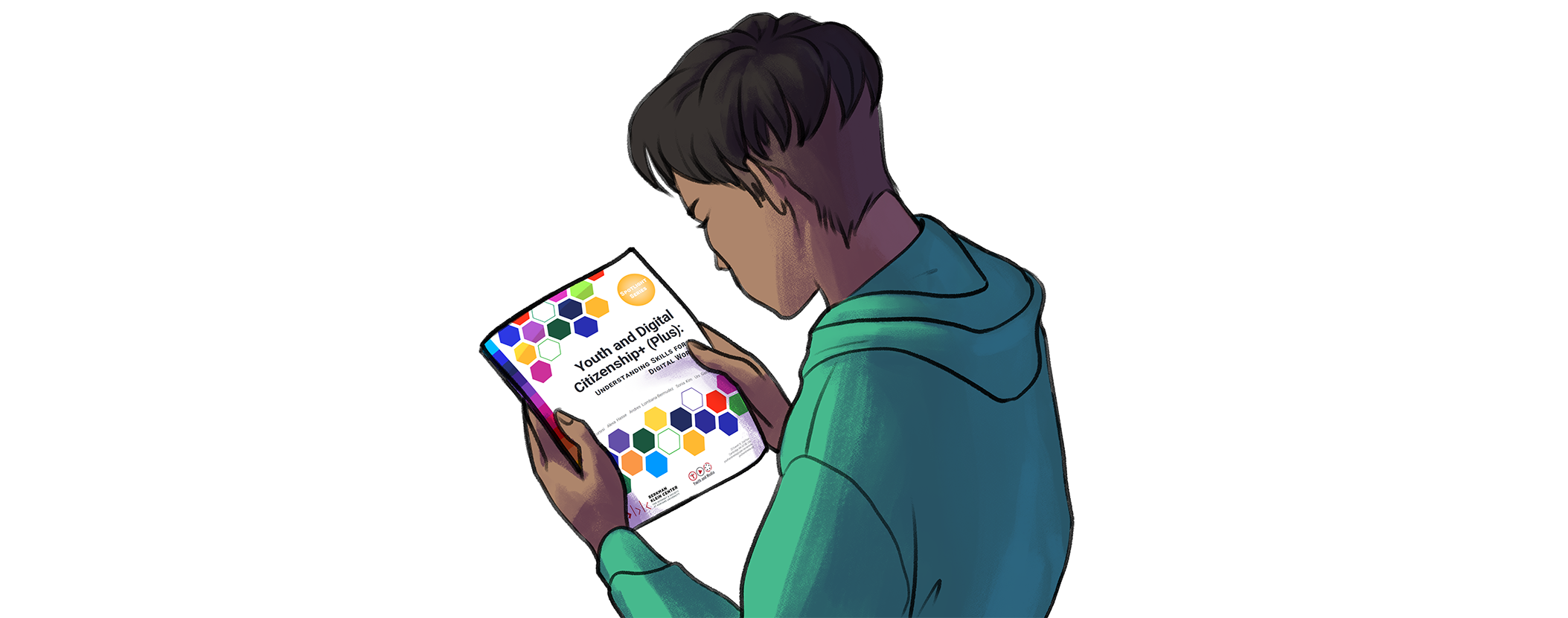
Youth and Digital Citizenship+ (Plus): Understanding Skills for a Digital World — by Sandra Cortesi, Alexa Hasse, Andres Lombana-Bermudez, Sonia Kim, and Urs Gasser — maps the current discourse around youth (ages 12-18) and digital citizenship. The report focuses on several key questions:
- Why has the concept of digital citizenship become central in discussions about youth, education, and learning in the 21st century?
- How is the concept of digital citizenship similar to or different from other concepts, such as digital literacy, media literacy, new media literacies, 21st century skills, or digital competence?
- Based on a mapping of 35 frameworks, what does the current digital citizenship landscape address, and to what extent are youth’s voices included in the development, implementation, and evaluation of digital citizenship initiatives?
- What are key considerations for learning spaces and meaningful youth engagement?
- How can we address underexplored areas, such as artificial intelligence and data?
The report accompanies the Youth and Media team’s educational platform , which offers 100+ educational tools that can be implemented in formal or informal learning spaces.
Youth and Digital Citizenship+ (Plus): Understanding Skills for a Digital World is one of the Youth and Media team’s “spotlights” — briefing documents that showcase the ways youth engage with the digital landscape, and what opportunities and challenges emerge from it. Additional recent spotlights include “ Youth and Artificial Intelligence: Where We Stand ” and “ Youth and Cyberbullying: Another Look .”
You might also like
- publication Youth and Cyberbullying
- publication Youth and Artificial Intelligence
- publication Youth and Digital Citizenship+ (Plus)
- publication Youth Participation in a Digital World
Projects & Tools 01

Youth and Media
Youth and Media (YaM) encompasses an array of research, advocacy, and development initiatives around youth (age 12-18) and digital technology.
Digital Citizenship Definition and Problems Proposal
- To find inspiration for your paper and overcome writer’s block
- As a source of information (ensure proper referencing)
- As a template for you assignment
Digital Citizenship Definition
Problem of digital citizenship implementation, literature review, purpose of the study, theoretical framework, methodology.
Nowadays more and more students interact with the digital content for learning so that the concept of the digital citizenship is becoming one of the most relevant issues. Digital citizens have the same rights and responsibilities as ordinary citizens of the country including the right to study at university, to acquire real estate, or to learn. In this connection, the paper is devoted to the proposal of the digital citizenship necessity and its safe implementation including such integral aspects as digital literacy, etiquette, tolerance to other digital citizens, appropriate referencing, and others and resulting in the design of the methodology for the prospective study, the aim of which is to examine the level of the digital citizenship competence among students.
The digital citizenship, also known as the e-citizenship, involves regular access to networks and their effective use that require several conditions such as the presence of access to the Internet, the availability of computers or gadgets, the ability to use technology properly, and, last but not least, the critical thinking skills to evaluate the reliability of information that can be found online. More precisely, the digital citizenship is a new developmental stage of the society and technology that is associated with the impact of digital and communication technologies (Searson, Hancock, Soheil, & Shepherd, 2015).
The Internet becomes a factor of socialization and modernization of education changing the very paradigm of acquiring knowledge and skills. The variability of the digital education allows focusing on individual, group, and distance trajectories.
Who is a digital citizen? A digital citizen is a confident user of the digital technology, who uses it to participate in educational, cultural, and economic activities of the digital community. He develops critical thinking skills in cyberspace and competently speaks the language of the community. The digital citizen communicates with others demonstrating honesty, integrity, and ethical behavior. He respects the concepts of privacy and freedom of expression in the digital world and actively promotes the value of the e-citizenship.
It goes without saying that the digital citizenship has great opportunities for learning and self-development. However, there are a set of problems related to the development of the Internet and the digital citizenship, in particular, which are pointed out below. The first problem concerns the provision of the information credibility. A wide range of educational resources offer new forms of social integration and social space practices on the Internet. In this connection, it is crucial to increase the digital competence of teachers, who would transfer the acquired knowledge to students (Hicks, Lee, Berson, Bolick, & Diem, 2014).
Therefore, the improvement of the digital literacy of teachers and reducing existing gap between them and students should be addressed. Teachers should be aware of broad possibilities of the Internet as a source of information and communication. What is more important, the second problem of teachers’ realization of the content, communication, and technical risks of the global network should be enhanced as well as they influence students’ psychological state, personality development, and socialization processes (Hicks et al., 2014). Taking into account all the above mentioned recommendations, special programs to improve the digital literacy of students are needed in the context of the overall educational program. The methodological support of teachers in their integration into the digital world also matters (Ribble & Miller, 2013).
The third problem is the access and use of the digital technology both in classroom and during the distance learning. One more problem is keeping students interested in the e-citizenship. For example, the digital education based on game tools and techniques consisting of alternate reality games (ARG), massively multiplayer online games (MMO), and global strategies (a genre of computer games that allow the opportunity to manage the entire state or civilization) might be useful (Hill, 2015).
The next problem of the security and safety of students in the online environment is the core of the proposal. There is a basic set of rights and responsibilities such as privacy, freedom of speech, and others that apply to all digital citizens. Let us consider the above aspect of the digital citizenship in detail. The safe use of the online content both in the classroom and home environments focuses on legal and ethical standards (Missingham, 2009). It is very significant to understand that it is not just about basic computer skills or expanding horizons about the possibilities of using the Internet services but also about the habits of communicative behavior while working on the Web and the use of web-based tools.
First, it is necessary to identify key factors of the digital education development. Technology becomes a tool that increasingly expands teaching and learning opportunities, means of communication, and socialization of students. The digital equality is currently regarded as the educational factor: those with technological skills have more opportunities for a successful start. At the same time, values of innovation and creativity are precipitously rising.
Searson et al. (2015) claim that the learning environment changes dramatically and expands from the classroom to the interdisciplinary communities, whose members are engaged, communicate, and collaborate virtually with the help of technologies. Thus, there is a growing interest in innovative areas of education such as online training, mentoring, and independent research
The diversity of the digital citizenship makes it even more attractive. For instance, flexible displays are considered an important new technology in education. Thin interactive displays and embedded boards might be integrated into a variety of subjects. Besides, tablet computers with big screens and rich interface make the ideal tool for presentations, content sharing, video, and images as they are easy to use and visually expressive. It is also quite important to note that the 3D printer is a device that uses a method of creating layered physical objects based on a virtual 3D model. Such a technology allows creating virtual three-dimensional models.
The research conducted in recent years by Ribble (2009) show that the rapid mastery of the Internet by students is associated with the lack of awareness of both the risks and threats of the digital world and the possibility of coping with them. According to Ribble (2009), a former teacher, university lecturer, the author of “Digital Citizenship in Schools”, and the creator of the digitalcitizenship.org resource, each digital citizen should have nine basic skills listed below.
Students come to university already knowing how to use electronic devices. However, do they understand how to use electronic devices properly? The evidence dictates that students should begin learning the rules of the digital citizenship at primary school throughout high school and put it in the curriculum. Today students get some skills, watch presentations, but they are not in the curriculum and students are to forget about it. Ribble (2009) states that such learning is necessary to educate the digital citizens. As a basis for the e-learning, the author offers nine fundamental elements of the e-citizenship that are represented in Figure 1.
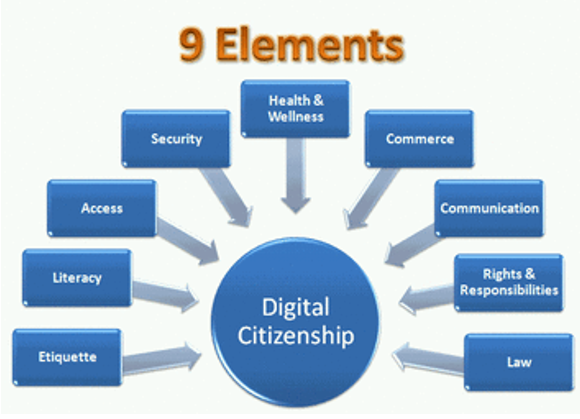
Let us consider each of the elements in detail.
- Digital access assumes the electronic participation in digital society that includes equal access to technology for everyone and provides an understanding of what are the limitations and drawbacks when this access is not provided. In other words, the digital openness “implies that everybody could reach information which support civic and personal decisions” (Simsek & Simsek, 2013, p. 132).
- Digital commerce reflects how to be effective consumers in the digital economy and to be able to make informed decisions about purchases of both digital goods and other products online (Simsek & Simsek, 2013).
- Digital communication suggests how to choose a way to communicate with others. Ohler (2010) considers that “digital communities might not be local, but they feel local. Members of digital gatherings feel they belong to a real community, and thus project themselves into cyberspace in ways that have meaning and emotional significance” (p. 42). For example, if one needs to send an e-mail or communicate through social networks, he or she would restrict the inappropriate communication.
- Digital literacy reveals the need to know how to learn in a digital society. It includes the efficient use of various techniques and Internet applications. According to Ribble and Miller (2013), “Awareness means engaging students to become technologically literate” (p. 16). The digital citizens should have the opportunity to learn new skills as needed.
- Digital etiquette reflects the notion of inappropriate behavior on the Internet as well as the need to know how to behave appropriately so that other digital citizens feel comfortable and safe.
- Digital law explains how to use the technology in accordance with the law. In particular, digital citizens should not hack the information, download music illegally, use plagiarism, send spam, and engage in identity or funds theft.
- Digital rights and responsibilities. Digital citizens need to take into account the virtual Bill of Rights. Issues such as privacy, freedom of speech, and others are also applicable to digital citizens.
- Digital health and wellness. Digital citizens should know how to protect themselves from the dangers inherent in the technology. “Ideally cyber wellness elevates policy and practice to a more balanced level, where students can function productively in digital environments, yet, within a safe environment” (Searson et al., 2015, p. 738). Basically, the mentioned issue answers the questions of how to save eyesight and hearing or how to avoid overstrain syndrome and psychological problems such as the Internet addiction.
- Digital security. Digital citizens cannot think that they are completely safe on the Internet. It is necessary to take care of the digital security creating secure passwords, using data backup, anti-virus protection, and other measures.
In this connection, the critical approach to assessing the reliability of the information found on the Internet involves a set of the essential gradation components: students’ awareness of the need to evaluate the credibility of Internet sources and assessment of the accuracy of the sources; teacher’s evaluation of the accuracy of the sources and motivation of students so that they are also guided by the principles of critical appraisal of sources.
There is also need to be aware of and avoid the Internet addiction (Rooij & Prause, 2014). As for the referencing and citation, students should be aware of the obligatory need for it, they should index and quote sources used in their work correctly on the basis of generally accepted rules of the particular referencing style. Consequently, students should be aware of the need to respect copyright and licenses.
In order to design and implement the digital citizenship implementation program that would provide effective digital learning, it is essential to assure the safety and security of the learning process. Seeing the above literature review, I would like to study deeply the given concept of the digital citizenship from the ethical view to add to the growing body of literature related to technology-rich teaching and learning. In particular, I would like to address the following research questions in my prospective research:
- Focus Question 1. Do students know where to find quality information on the Internet? Additional Questions: What resources do teachers need to get to share quality information with students? How should the Internet be utilized in the classroom environment?
- Focus Question 2. What is cyberbullying? Additional Questions: How can students secure themselves in the online environment? What should students remember of the term of cyberbullying?
- Focus Question 3. What are online etiquette peculiarities? Additional Questions: Do students should follow rules when working online? How do students know what is appropriate to do online?
- Focus Question 4. Do students use technologies too much? Additional Questions: Where can students gain the information about the use of technologies? How much can group mates affect the use of certain technologies? Is there the increase of mental processes speed or the formation of neural connections deficit? Does the Internet necessary for success in the education?
- Focus Question 5. Is there the devaluation of the concept of “friendship” and avoidance of real communication? Does the digital citizenship mean the excessive network or a new way of life? Does the change of the mechanisms of thinking, attention, memory, perception, and speech make the excess of information or adapt to previously unimaginable amounts of information and communication?
Accordingly, the purpose of the paper might be formulated in the following way: the study is devoted to examining the ethics of the digital citizenship accurately and appropriately applying the concepts of Ribble and other scholars and conduct the research among students to examine their ethical level concerning various forms of the digital citizenship resulting in the recommendations and suggestions that would enhance it.
In other words, I would like to investigate students’ digital competence to design a comprehensive digital citizenship curriculum. Such research would integrate both theoretical and practical investigations to achieve more precise results. The importance of the proposed study is obvious taking into account that there are plenty of cases of inappropriate and illegal use of the Internet and digital technology in general. Above all, there is a need to guarantee the safe learning environment and increase the awareness of both teachers and students. Besides, the findings of the research might be beneficial to detect any gaps and limitations to eliminate them in future investigations.
Since the purpose of the research is to examine the competence level of the digital citizenship among students and provide adequate recommendations, the following variables are identified: digital citizenship (independent variable) and competence level (dependent variable). It is anticipated that there will be differences in the quantity and / or quality of various aspects of the competence. A cross-sectional survey framework will be used to collect and analyze descriptive and quantitative data regarding the chosen topic.
The forms of the e-citizenship access adopted in the university and their impact on students’ learning will be analyzed based on questionnaires with closed-ended questions. According to Bryman (2012), the cross-sectional survey allows determining the possible changes and will either support or refute the anticipated outcomes with nominal and ordinal evidence that can be discussed with a reasonable degree of reliability. For this study, survey questionnaires are a cost and time effective way to request opinions and behaviors of students and their use of digital technology for learning.
Every research needs a study design before starting, because it is an integral part of the research. Therefore, there is a need to determine the methodology of the possible investigation.
Epistemological, Theoretical, and Methodological Research Perspectives
The Internet and digital technology are rapidly changing not only the science but life itself. Due to satellite communications, any citizen of the world can communicate with family and friends or find almost any requested information (Ohler, 2010). Most recently, the printed book was valued as an indispensable element of culture, but today’s young people increasingly prefer to use electronic resources.
To briefly summarize the epistemological perspective of the study, one can reduce it to a rethinking of the paramount concepts such as the subject of knowledge, the conditions of cognition, consciousness, and communication as well as a new vision of old problems of subject and object relations, truths and values, language and consciousness, and fundamental human rights. The first direction is associated with the construction and description of global web community’s safe development. The second direction is seen as a virtual image of the world as the digital citizenship environment becomes the universal communicative and informative space, where citizens’ rights and responsibilities should be accomplished.
The methodological perspective of the research reflects the fact that it cannot be based only on the central theories of such sciences as philosophy, sociology, semiotics, psychology, cognitive science, and requires its own theoretical framework that goes beyond the simple description of objects and their random classifications. The complexity of the situation is that no generally accepted theories in the field of the digital citizenship exist, even at the level of common discourse. Consequently, the research is expected to promote the establishment of uniform methodological ground to some extent.
As for the theoretical perspective , in the descriptions of the digital citizenship, one might find different notions, which are not always identifiable in terms of its conceptual accessories, though gradually it is possible to detect the description languages and their substantive focus. However, terminology rows go into the conceptual ones transferring to the next question of the paradigmatic relatedness that is aimed at the identification of the basic approaches and objects of the study analysis principles. In this regard, the study will contribute to answer to several questions such as how to describe and study the competence in digital citizenship or what are the adequate tools to analyze it?
Possible Participants
The purposive sampling will be used for the research. Two or three departments or universities will be contacted to participate in the research. Students of different sexes, ethnicities, and races will be interviewed on their approaches to using digital technology for learning. Overall, it seems appropriate to interview approximately 150 students from different departments and, perhaps, universities. It seems that the less number of interviewee would lead to the incorrect results.
Methods of Inquiry
Interviews will be used to collect more detailed information about the digital citizenship competence. A semi-structured interview will be employed to collect the required information from students.
In addition, I consider that it is a good idea to initiate anonymous questionnaire with the help of the special website. For example, Google Forms or Survey Monkey are useful and comprehensible tools to create specific survey and analyze results.
Study Reliability
In the framework of growing significance of learning through the digital media, it seems appropriate to investigate this field. The educational potential of the digital citizenship is high and empowers students to engage in the global research community (Simsek & Simsek, 2013). The adequate interpretation and modeling of large volumes of information along with data mining might improve learning adapting it to the individual needs and abilities of students. The competent digital citizenship would create safe collaborative environment of online resources that contain tutorials, tools, and other materials to provide effective learning.
Possible Method of Analysis
In my research, I would like to use the mixed design of the investigation. A qualitative method involves the collection of information in a free form; it focuses on the understanding, explanation, and interpretation of empirical data that is the source of speculation and productive ideas. Bryman (2012) states that the quantitative method comprises conducting various surveys based on the use of structured questions of closed type, which corresponds to a large number of respondents. The principal objective of the quantitative research is to obtain a numerical estimate of the issue or the reaction of respondents towards it.
For example, it would be better if the number of students would be accompanied the explanation of the situation. Therefore, the study will utilize a mixed methods approach in order to collect the data for analysis that allows collecting both descriptive statistical data through the use of a survey or questionnaire, as well as take advantage of the “richer data” that can be expected from qualitative interviews. After that, I would like to interpret and understand the results to make relevant conclusions and contribute to some extent to the digital citizenship appropriateness.
To conclude, this paper proposes the study of appropriate digital citizenship implementation among students. Through the literature review, I identified key problems and chose the problem of the digital citizenship competence among students for the further deeper examination. The proposal suggests several research questions that embrace a number of essential issues concerning the ethics of the chosen topic.
It was stated that the purpose of the study is to scrutinize the competence level of the digital citizenship among students and provide sufficient suggestions to enhance it. In order to achieve the desired outcome, the proposal includes the methodology part that describes in detail such significant elements of the study as participants, research design, methods of analysis, and others. All in all, the paper involves the comprehensible preliminary research proposal.
Bryman, A. (2012). Social research methods (4th ed.). New York, NY: Oxford University Press.
Hicks, D., Lee, J., Berson, M., Bolick, C., & Diem, R. (2014). Guidelines for Using Technology to Prepare Social Studies Teachers. Contemporary Issues in Technology and Teacher Education, 14 (4), 433-450.
Hill, V. (2015). Digital citizenship through game design in Minecraft. New Library World, 116 (7/8), 369-382.
Missingham, R. (2009). Encouraging the digital economy and digital citizenship. The Australian Library Journal, 58 (4), 386-399.
Ohler, J. (2010). Digital community, digital citizen . Thousand Oaks, CA: Corwin Press.
Ribble, M. (2009). Passport to Digital Citizenship. Learning & Leading with Technology, 2 (1), 1-17.
Ribble, M., & Miller, T. N. (2013). Educational Leadership in an Online World: Connecting Students to Technology Responsibly, Safely, and Ethically. Journal of Asynchronous Learning Networks, 17 (1), 137-145.
Rooij, A. V., & Prause, N. (2014). A critical review of “Internet addiction” criteria with suggestions for the future. Journal of Behavioral Addictions, 3 (4), 203-213.
Searson, M., Hancock, M., Soheil, N., & Shepherd, G. (2015). Digital citizenship within global contexts. Education and Information Technologies, 20 (4), 729-741.
Simsek, E., & Simsek, A. (2013). New Literacies for Digital Citizenship. Online Submission, Contemporary Educational Technology, 4 (3), 126-137.
- How Is Globalization Impacting Citizenship?
- Digital Citizenship and Education
- Digital Citizenship: A Community-Based Approach
- The Cultural Impact of Technology in Modern Society
- The Cultural Impact of Technology
- Transformation in the Mode of Life and Cultural Impact of Technology
- Cultural Impact of Technology on Life
- Telescreens in Our Pockets: Mobile Apps and Privacy Problem
- Chicago (A-D)
- Chicago (N-B)
IvyPanda. (2020, September 28). Digital Citizenship Definition and Problems. https://ivypanda.com/essays/digital-citizenship-definition-and-problems/
"Digital Citizenship Definition and Problems." IvyPanda , 28 Sept. 2020, ivypanda.com/essays/digital-citizenship-definition-and-problems/.
IvyPanda . (2020) 'Digital Citizenship Definition and Problems'. 28 September.
IvyPanda . 2020. "Digital Citizenship Definition and Problems." September 28, 2020. https://ivypanda.com/essays/digital-citizenship-definition-and-problems/.
1. IvyPanda . "Digital Citizenship Definition and Problems." September 28, 2020. https://ivypanda.com/essays/digital-citizenship-definition-and-problems/.
Bibliography
IvyPanda . "Digital Citizenship Definition and Problems." September 28, 2020. https://ivypanda.com/essays/digital-citizenship-definition-and-problems/.
Canadian School Libraries Journal
A publication of canadian school libraries: issn 2560-7227, the experience of being a digital citizen and the stories that connect us.
March 3, 2021 Web Editor Teaching & Learning , Vol. 5 No. 1, Winter 2021 0

By Leigh Cassell
The Power of Technology to Connect
Technology is intertwined with almost every part of our lives, shaping the way we connect, socialize, work, play, and learn. Technology has transformed the ways we interact with each other, and the world.
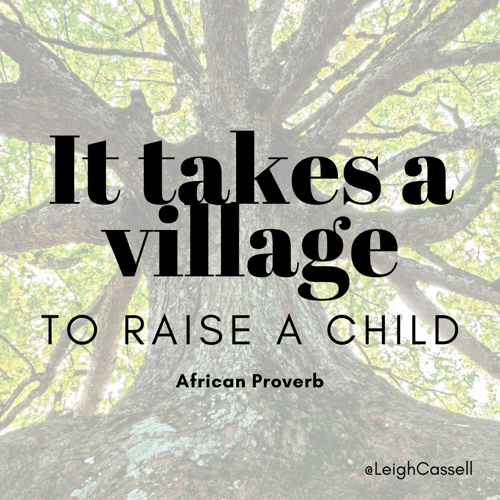
In the midst of a global pandemic education systems around the world are rethinking what it means to educate students in the age of digital networks. With access to global education systems and resources like Digital Human Library at our fingertips, progressive teachers are adopting a networked learning perspective and digital experiential approach to teaching and learning. In other words, teachers are leveraging digital technologies to broaden the K-12 student experience in ways that connect them with new people, places, and ideas from around the world.
But educating students in online spaces is not just about providing them with access to digital technologies. Ensuring that we equip students with the critical digital literacy skills and global competencies (transferable skills) they need to navigate and flourish in online spaces is essential for their growth and social development. Teaching students digital citizenship is more important now, than it has ever been.
Digital Citizenship is more than just a teaching tool, it is a way to prepare students for a society full of technology. Dr. Mike Ribble
What is Digital Citizenship?
Digital citizenship is about how we should act, and interact with others when we are online. It’s about teaching users of technology what they need to know in ways that prepare them to be contributing citizens today, and in the future.
Digital citizenship includes, and expands on the definition of citizenship — the quality or character of an individual viewed as a member of society — keeping in mind who we are as members of a larger, more global community. More specifically, digital citizenship can be defined as the “norms of appropriate, responsible behaviour with regard to technology use” (Ribble, 2017).
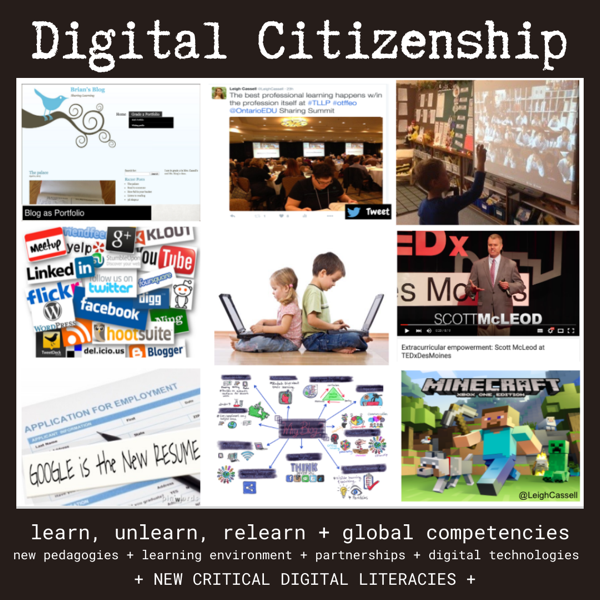
As we consider what citizenship looks like in a digital world, how we act as members of a network of people locally and globally requires an awareness of the ways technology impacts our participation in these networks. It demands that we consider norms of responsible behaviour, our new rights and responsibilities online, and our quality of habits and actions within these communities. We must also learn to balance the advantages and potential risks with our safety and security in online spaces, including how to navigate and respond to inappropriate content and cyberbullying, as well as ethical issues like copyright and plagiarism.
Although there are many variations of the definition, at the core of digital citizenship is the idea that “we are all citizens who belong to a community, and therefore, the contributions we make to this community should be positive, productive, and reasonable” (Ontario Ministry of Education, 2014).
Why Teach Digital Citizenship?

When integrated effectively, technology has the potential to transform learning by immersing students in participatory learning environments that transcend the boundaries of space and time. Digital citizenship requires participation, and schools have a responsibility to provide a safe space for students’ guided participation in online spaces. Just like we would never teach a teenager to drive without ever getting into a car, we cannot teach digital citizenship without allowing students to go online.
Although students today are often competent basic users of technology, most do not have the necessary digital citizenship skills to be safe and responsible online. Educators must make it a priority to teach students the critical digital literacy elements embedded within a digital citizenship framework, including how to navigate their digital world, evaluate and reflect critically on information, respect intellectual property, protect their privacy and the privacy of others, and build a positive reputation and digital footprint. We need to shift our thinking about digital citizenship as a lesson a week and create a school culture and mindset of understanding around the human, cultural, and societal implications related to technology use.

A “one-life” (Couros, 2015) approach to technology integration is a key factor that contributes to a positive digital citizenship culture of innovation, risk-taking, and continuous learning, while also building bridges between home and school. The successful integration of digital citizenship instruction begins with our knowledge of effective pedagogies and a commitment to creating positive, inclusive digital learning environments. The relationships we have with our students, paired with our understanding of the digital technologies students are using at home should then inform how we are integrating digital into our classroom programs. If we want to engage students as digital citizens in the classroom, we need to build a bridge between the digital citizenship experiences they are having at home “in real life”, with the curriculum-based experiences they are having at school. Doing so ensures that students are actively engaged to “develop the knowledge, skills and characteristics that will lead them to become personally successful, economically productive and actively engaged citizens” (Ontario Ministry of Education, 2013).
In today’s world, teaching digital citizenship is not optional. Digital citizenship instruction must be entrenched in daily conversations with students as they are immersed in digital learning environments, experiencing appropriate ways to act, interact, learn and create with others. The experience of being a digital citizen is fundamental in providing students with the knowledge, skills, strategies and global competencies they need to be successful today, and in the future.
Digital citizenship needs to be embraced by educators as a way of thinking – and incorporated, whenever possible, into any type of existing curriculum. Melissa Davis
Using Children’s Books to Start Conversations about Digital Citizenship
While the experience of being a digital citizen is fundamental to learning digital citizenship, where do teachers start? The use of children’s books to introduce elements of digital citizenship is a powerful way to begin conversations with students. Children’s books as digital citizenship mentor texts introduce students to new concepts and ideas, bridge connections between technology use at home and at school, and bring positive attention to digital technology as a powerful tool for making new connections and building relationships.
Aubrey Bright in Stories that Connect Us
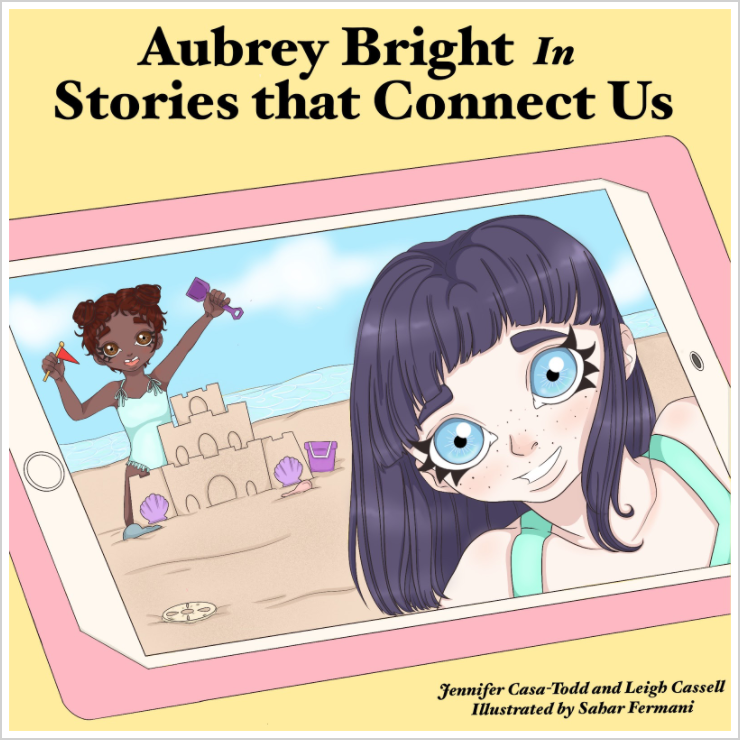
As global education systems move to blended and full remote learning, it’s timely to introduce a new children’s book written to start conversations about digital citizenship and the important role that technology plays in our lives.
Aubrey Bright in Stories that Connect Us is a heart-warming tale of inter-generational connection, and the first book in a new series focusing on how relationships are strengthened through storytelling and the power technology has to connect us.
Aubrey, a young precocious girl, has a strong relationship with her Gramma which is anchored in a love of storytelling. When her Gramma gets sick, Aubrey shows her that technology can be a powerful tool for a new kind of storytelling and connection.
How to Use this Book
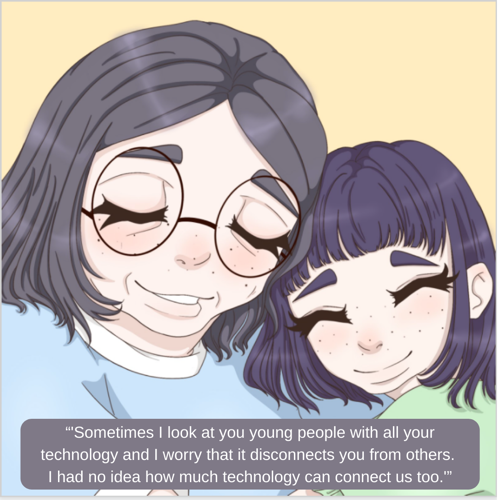
This book is intended to help readers start conversations about digital citizenship in ways that lead to their own digital citizenship experiences. With elements of digital citizenship woven throughout the story, readers are encouraged to use the Conversation Starters and revisit various moments in the book to start their own conversations about the stories that connect them, and the important role technology plays in their lives. Just as Aubrey uses digital technology to document, create, connect, and share life’s beautiful moments, readers can use technology to document and reflect on their learning, create and share their own unique digital stories, and connect with others for the purpose of learning and building new relationships.
What’s more, the book features the artwork of a talented student whose beautiful illustrations inspired the character, and whose voice helped craft the narrative. The book also includes a unique non-fiction page All About Sand Dollars written by my daughter that inspired our own digital citizenship conversations at home. This book will no doubt also inspire readers to start their own conversations about making their dreams happen.
Casa-Todd, Jennifer and Leigh Cassell (2020). Aubrey Bright in Stories that Connect Us . Alexandria VA: Edumatch Publishing.
Couros, A. & Hildebrandt, K. (2015). Digital Citizenship Education in Saskatchewan Schools: A Policy Planning Guide for School Divisions and Schools to Implement Digital Citizenship Education from Kindergarten to Grade 12. Government of Saskatchewan.
Ribble, M. (2017). Nine Elements. Digital Citizenship: Using Technology Appropriately (blog). Accessed at https://www.digitalcitizenship.net/nine-elements.html
Ontario Ministry of Education (2014). 21st Century Teaching and Learning: Digital Citizenship and Digital Literacy: What Research Tells Us. Edugains . Toronto: Queen’s Printer for Ontario. Accessed at http://www.edugains.ca/resources21CL/WhatsNew/WhatResearchTellsUs-DigitalCitizenship.pdf
Ontario Ministry of Education (2013). The Ontario Curriculum: Social Studies Grades 1 to 6, History and Geography Grades 7 and 8 . Toronto: Queens Printer for Ontario. Accessed at http://www.edu.gov.on.ca/eng/curriculum/elementary/sshg18curr2013.pdf

Leigh Cassell is an educator, adventurer, entrepreneur and partner in learning with teachers, students, businesses and NGOs around the world. Leigh is an Education and Innovation Consultant , and Founder and CCO at Digital Human Library . Leigh is a dynamic influencer and reflective practitioner, highly skilled in building networked learning communities in ways that facilitate relationships for learning, cultivate emotional intelligence and nurture leadership in education. Leigh has received the highest level of awards from the Ontario Public School Board Association and the Ontario Teachers Federation, and she has been recognized internationally by Apple, Microsoft and Google for her innovation in education.
- digital citizenship
Copyright © 2024 | WordPress Theme by MH Themes
- Search Menu
Sign in through your institution
- Browse content in Arts and Humanities
- Browse content in Archaeology
- Anglo-Saxon and Medieval Archaeology
- Archaeological Methodology and Techniques
- Archaeology by Region
- Archaeology of Religion
- Archaeology of Trade and Exchange
- Biblical Archaeology
- Contemporary and Public Archaeology
- Environmental Archaeology
- Historical Archaeology
- History and Theory of Archaeology
- Industrial Archaeology
- Landscape Archaeology
- Mortuary Archaeology
- Prehistoric Archaeology
- Underwater Archaeology
- Urban Archaeology
- Zooarchaeology
- Browse content in Architecture
- Architectural Structure and Design
- History of Architecture
- Residential and Domestic Buildings
- Theory of Architecture
- Browse content in Art
- Art Subjects and Themes
- History of Art
- Industrial and Commercial Art
- Theory of Art
- Biographical Studies
- Byzantine Studies
- Browse content in Classical Studies
- Classical Literature
- Classical Reception
- Classical History
- Classical Philosophy
- Classical Mythology
- Classical Art and Architecture
- Classical Oratory and Rhetoric
- Greek and Roman Archaeology
- Greek and Roman Epigraphy
- Greek and Roman Law
- Greek and Roman Papyrology
- Late Antiquity
- Religion in the Ancient World
- Social History
- Digital Humanities
- Browse content in History
- Colonialism and Imperialism
- Diplomatic History
- Environmental History
- Genealogy, Heraldry, Names, and Honours
- Genocide and Ethnic Cleansing
- Historical Geography
- History by Period
- History of Agriculture
- History of Education
- History of Emotions
- History of Gender and Sexuality
- Industrial History
- Intellectual History
- International History
- Labour History
- Legal and Constitutional History
- Local and Family History
- Maritime History
- Military History
- National Liberation and Post-Colonialism
- Oral History
- Political History
- Public History
- Regional and National History
- Revolutions and Rebellions
- Slavery and Abolition of Slavery
- Social and Cultural History
- Theory, Methods, and Historiography
- Urban History
- World History
- Browse content in Language Teaching and Learning
- Language Learning (Specific Skills)
- Language Teaching Theory and Methods
- Browse content in Linguistics
- Applied Linguistics
- Cognitive Linguistics
- Computational Linguistics
- Forensic Linguistics
- Grammar, Syntax and Morphology
- Historical and Diachronic Linguistics
- History of English
- Language Variation
- Language Families
- Language Acquisition
- Language Evolution
- Language Reference
- Lexicography
- Linguistic Theories
- Linguistic Typology
- Linguistic Anthropology
- Phonetics and Phonology
- Psycholinguistics
- Sociolinguistics
- Translation and Interpretation
- Writing Systems
- Browse content in Literature
- Bibliography
- Children's Literature Studies
- Literary Studies (Modernism)
- Literary Studies (Asian)
- Literary Studies (European)
- Literary Studies (Eco-criticism)
- Literary Studies (Romanticism)
- Literary Studies (American)
- Literary Studies - World
- Literary Studies (1500 to 1800)
- Literary Studies (19th Century)
- Literary Studies (20th Century onwards)
- Literary Studies (African American Literature)
- Literary Studies (British and Irish)
- Literary Studies (Early and Medieval)
- Literary Studies (Fiction, Novelists, and Prose Writers)
- Literary Studies (Gender Studies)
- Literary Studies (Graphic Novels)
- Literary Studies (History of the Book)
- Literary Studies (Plays and Playwrights)
- Literary Studies (Poetry and Poets)
- Literary Studies (Postcolonial Literature)
- Literary Studies (Queer Studies)
- Literary Studies (Science Fiction)
- Literary Studies (Travel Literature)
- Literary Studies (War Literature)
- Literary Studies (Women's Writing)
- Literary Theory and Cultural Studies
- Mythology and Folklore
- Shakespeare Studies and Criticism
- Browse content in Media Studies
- Browse content in Music
- Applied Music
- Dance and Music
- Ethics in Music
- Ethnomusicology
- Gender and Sexuality in Music
- Medicine and Music
- Music Cultures
- Music and Culture
- Music and Religion
- Music and Media
- Music Education and Pedagogy
- Music Theory and Analysis
- Musical Scores, Lyrics, and Libretti
- Musical Structures, Styles, and Techniques
- Musicology and Music History
- Performance Practice and Studies
- Race and Ethnicity in Music
- Sound Studies
- Browse content in Performing Arts
- Browse content in Philosophy
- Aesthetics and Philosophy of Art
- Epistemology
- Feminist Philosophy
- History of Western Philosophy
- Metaphysics
- Moral Philosophy
- Non-Western Philosophy
- Philosophy of Action
- Philosophy of Law
- Philosophy of Religion
- Philosophy of Science
- Philosophy of Language
- Philosophy of Mind
- Philosophy of Perception
- Philosophy of Mathematics and Logic
- Practical Ethics
- Social and Political Philosophy
- Browse content in Religion
- Biblical Studies
- Christianity
- East Asian Religions
- History of Religion
- Judaism and Jewish Studies
- Qumran Studies
- Religion and Education
- Religion and Health
- Religion and Politics
- Religion and Science
- Religion and Law
- Religion and Art, Literature, and Music
- Religious Studies
- Browse content in Society and Culture
- Cookery, Food, and Drink
- Cultural Studies
- Customs and Traditions
- Ethical Issues and Debates
- Hobbies, Games, Arts and Crafts
- Natural world, Country Life, and Pets
- Popular Beliefs and Controversial Knowledge
- Sports and Outdoor Recreation
- Technology and Society
- Travel and Holiday
- Visual Culture
- Browse content in Law
- Arbitration
- Browse content in Company and Commercial Law
- Commercial Law
- Company Law
- Browse content in Comparative Law
- Systems of Law
- Competition Law
- Browse content in Constitutional and Administrative Law
- Government Powers
- Judicial Review
- Local Government Law
- Military and Defence Law
- Parliamentary and Legislative Practice
- Construction Law
- Contract Law
- Browse content in Criminal Law
- Criminal Procedure
- Criminal Evidence Law
- Sentencing and Punishment
- Employment and Labour Law
- Environment and Energy Law
- Browse content in Financial Law
- Banking Law
- Insolvency Law
- History of Law
- Human Rights and Immigration
- Intellectual Property Law
- Browse content in International Law
- Private International Law and Conflict of Laws
- Public International Law
- IT and Communications Law
- Jurisprudence and Philosophy of Law
- Law and Society
- Law and Politics
- Browse content in Legal System and Practice
- Courts and Procedure
- Legal Skills and Practice
- Primary Sources of Law
- Regulation of Legal Profession
- Medical and Healthcare Law
- Browse content in Policing
- Criminal Investigation and Detection
- Police and Security Services
- Police Procedure and Law
- Police Regional Planning
- Browse content in Property Law
- Personal Property Law
- Study and Revision
- Terrorism and National Security Law
- Browse content in Trusts Law
- Wills and Probate or Succession
- Browse content in Medicine and Health
- Browse content in Allied Health Professions
- Arts Therapies
- Clinical Science
- Dietetics and Nutrition
- Occupational Therapy
- Operating Department Practice
- Physiotherapy
- Radiography
- Speech and Language Therapy
- Browse content in Anaesthetics
- General Anaesthesia
- Neuroanaesthesia
- Browse content in Clinical Medicine
- Acute Medicine
- Cardiovascular Medicine
- Clinical Genetics
- Clinical Pharmacology and Therapeutics
- Dermatology
- Endocrinology and Diabetes
- Gastroenterology
- Genito-urinary Medicine
- Geriatric Medicine
- Infectious Diseases
- Medical Oncology
- Medical Toxicology
- Pain Medicine
- Palliative Medicine
- Rehabilitation Medicine
- Respiratory Medicine and Pulmonology
- Rheumatology
- Sleep Medicine
- Sports and Exercise Medicine
- Clinical Neuroscience
- Community Medical Services
- Critical Care
- Emergency Medicine
- Forensic Medicine
- Haematology
- History of Medicine
- Medical Ethics
- Browse content in Medical Dentistry
- Oral and Maxillofacial Surgery
- Paediatric Dentistry
- Restorative Dentistry and Orthodontics
- Surgical Dentistry
- Browse content in Medical Skills
- Clinical Skills
- Communication Skills
- Nursing Skills
- Surgical Skills
- Medical Statistics and Methodology
- Browse content in Neurology
- Clinical Neurophysiology
- Neuropathology
- Nursing Studies
- Browse content in Obstetrics and Gynaecology
- Gynaecology
- Occupational Medicine
- Ophthalmology
- Otolaryngology (ENT)
- Browse content in Paediatrics
- Neonatology
- Browse content in Pathology
- Chemical Pathology
- Clinical Cytogenetics and Molecular Genetics
- Histopathology
- Medical Microbiology and Virology
- Patient Education and Information
- Browse content in Pharmacology
- Psychopharmacology
- Browse content in Popular Health
- Caring for Others
- Complementary and Alternative Medicine
- Self-help and Personal Development
- Browse content in Preclinical Medicine
- Cell Biology
- Molecular Biology and Genetics
- Reproduction, Growth and Development
- Primary Care
- Professional Development in Medicine
- Browse content in Psychiatry
- Addiction Medicine
- Child and Adolescent Psychiatry
- Forensic Psychiatry
- Learning Disabilities
- Old Age Psychiatry
- Psychotherapy
- Browse content in Public Health and Epidemiology
- Epidemiology
- Public Health
- Browse content in Radiology
- Clinical Radiology
- Interventional Radiology
- Nuclear Medicine
- Radiation Oncology
- Reproductive Medicine
- Browse content in Surgery
- Cardiothoracic Surgery
- Gastro-intestinal and Colorectal Surgery
- General Surgery
- Neurosurgery
- Paediatric Surgery
- Peri-operative Care
- Plastic and Reconstructive Surgery
- Surgical Oncology
- Transplant Surgery
- Trauma and Orthopaedic Surgery
- Vascular Surgery
- Browse content in Science and Mathematics
- Browse content in Biological Sciences
- Aquatic Biology
- Biochemistry
- Bioinformatics and Computational Biology
- Developmental Biology
- Ecology and Conservation
- Evolutionary Biology
- Genetics and Genomics
- Microbiology
- Molecular and Cell Biology
- Natural History
- Plant Sciences and Forestry
- Research Methods in Life Sciences
- Structural Biology
- Systems Biology
- Zoology and Animal Sciences
- Browse content in Chemistry
- Analytical Chemistry
- Computational Chemistry
- Crystallography
- Environmental Chemistry
- Industrial Chemistry
- Inorganic Chemistry
- Materials Chemistry
- Medicinal Chemistry
- Mineralogy and Gems
- Organic Chemistry
- Physical Chemistry
- Polymer Chemistry
- Study and Communication Skills in Chemistry
- Theoretical Chemistry
- Browse content in Computer Science
- Artificial Intelligence
- Computer Architecture and Logic Design
- Game Studies
- Human-Computer Interaction
- Mathematical Theory of Computation
- Programming Languages
- Software Engineering
- Systems Analysis and Design
- Virtual Reality
- Browse content in Computing
- Business Applications
- Computer Games
- Computer Security
- Computer Networking and Communications
- Digital Lifestyle
- Graphical and Digital Media Applications
- Operating Systems
- Browse content in Earth Sciences and Geography
- Atmospheric Sciences
- Environmental Geography
- Geology and the Lithosphere
- Maps and Map-making
- Meteorology and Climatology
- Oceanography and Hydrology
- Palaeontology
- Physical Geography and Topography
- Regional Geography
- Soil Science
- Urban Geography
- Browse content in Engineering and Technology
- Agriculture and Farming
- Biological Engineering
- Civil Engineering, Surveying, and Building
- Electronics and Communications Engineering
- Energy Technology
- Engineering (General)
- Environmental Science, Engineering, and Technology
- History of Engineering and Technology
- Mechanical Engineering and Materials
- Technology of Industrial Chemistry
- Transport Technology and Trades
- Browse content in Environmental Science
- Applied Ecology (Environmental Science)
- Conservation of the Environment (Environmental Science)
- Environmental Sustainability
- Environmentalist Thought and Ideology (Environmental Science)
- Management of Land and Natural Resources (Environmental Science)
- Natural Disasters (Environmental Science)
- Nuclear Issues (Environmental Science)
- Pollution and Threats to the Environment (Environmental Science)
- Social Impact of Environmental Issues (Environmental Science)
- History of Science and Technology
- Browse content in Materials Science
- Ceramics and Glasses
- Composite Materials
- Metals, Alloying, and Corrosion
- Nanotechnology
- Browse content in Mathematics
- Applied Mathematics
- Biomathematics and Statistics
- History of Mathematics
- Mathematical Education
- Mathematical Finance
- Mathematical Analysis
- Numerical and Computational Mathematics
- Probability and Statistics
- Pure Mathematics
- Browse content in Neuroscience
- Cognition and Behavioural Neuroscience
- Development of the Nervous System
- Disorders of the Nervous System
- History of Neuroscience
- Invertebrate Neurobiology
- Molecular and Cellular Systems
- Neuroendocrinology and Autonomic Nervous System
- Neuroscientific Techniques
- Sensory and Motor Systems
- Browse content in Physics
- Astronomy and Astrophysics
- Atomic, Molecular, and Optical Physics
- Biological and Medical Physics
- Classical Mechanics
- Computational Physics
- Condensed Matter Physics
- Electromagnetism, Optics, and Acoustics
- History of Physics
- Mathematical and Statistical Physics
- Measurement Science
- Nuclear Physics
- Particles and Fields
- Plasma Physics
- Quantum Physics
- Relativity and Gravitation
- Semiconductor and Mesoscopic Physics
- Browse content in Psychology
- Affective Sciences
- Clinical Psychology
- Cognitive Neuroscience
- Cognitive Psychology
- Criminal and Forensic Psychology
- Developmental Psychology
- Educational Psychology
- Evolutionary Psychology
- Health Psychology
- History and Systems in Psychology
- Music Psychology
- Neuropsychology
- Organizational Psychology
- Psychological Assessment and Testing
- Psychology of Human-Technology Interaction
- Psychology Professional Development and Training
- Research Methods in Psychology
- Social Psychology
- Browse content in Social Sciences
- Browse content in Anthropology
- Anthropology of Religion
- Human Evolution
- Medical Anthropology
- Physical Anthropology
- Regional Anthropology
- Social and Cultural Anthropology
- Theory and Practice of Anthropology
- Browse content in Business and Management
- Business History
- Business Strategy
- Business Ethics
- Business and Government
- Business and Technology
- Business and the Environment
- Comparative Management
- Corporate Governance
- Corporate Social Responsibility
- Entrepreneurship
- Health Management
- Human Resource Management
- Industrial and Employment Relations
- Industry Studies
- Information and Communication Technologies
- International Business
- Knowledge Management
- Management and Management Techniques
- Operations Management
- Organizational Theory and Behaviour
- Pensions and Pension Management
- Public and Nonprofit Management
- Strategic Management
- Supply Chain Management
- Browse content in Criminology and Criminal Justice
- Criminal Justice
- Criminology
- Forms of Crime
- International and Comparative Criminology
- Youth Violence and Juvenile Justice
- Development Studies
- Browse content in Economics
- Agricultural, Environmental, and Natural Resource Economics
- Asian Economics
- Behavioural Finance
- Behavioural Economics and Neuroeconomics
- Econometrics and Mathematical Economics
- Economic Methodology
- Economic Systems
- Economic History
- Economic Development and Growth
- Financial Markets
- Financial Institutions and Services
- General Economics and Teaching
- Health, Education, and Welfare
- History of Economic Thought
- International Economics
- Labour and Demographic Economics
- Law and Economics
- Macroeconomics and Monetary Economics
- Microeconomics
- Public Economics
- Urban, Rural, and Regional Economics
- Welfare Economics
- Browse content in Education
- Adult Education and Continuous Learning
- Care and Counselling of Students
- Early Childhood and Elementary Education
- Educational Equipment and Technology
- Educational Strategies and Policy
- Higher and Further Education
- Organization and Management of Education
- Philosophy and Theory of Education
- Schools Studies
- Secondary Education
- Teaching of a Specific Subject
- Teaching of Specific Groups and Special Educational Needs
- Teaching Skills and Techniques
- Browse content in Environment
- Applied Ecology (Social Science)
- Climate Change
- Conservation of the Environment (Social Science)
- Environmentalist Thought and Ideology (Social Science)
- Management of Land and Natural Resources (Social Science)
- Natural Disasters (Environment)
- Social Impact of Environmental Issues (Social Science)
- Sustainability
- Browse content in Human Geography
- Cultural Geography
- Economic Geography
- Political Geography
- Browse content in Interdisciplinary Studies
- Communication Studies
- Museums, Libraries, and Information Sciences
- Browse content in Politics
- African Politics
- Asian Politics
- Chinese Politics
- Comparative Politics
- Conflict Politics
- Elections and Electoral Studies
- Environmental Politics
- Ethnic Politics
- European Union
- Foreign Policy
- Gender and Politics
- Human Rights and Politics
- Indian Politics
- International Relations
- International Organization (Politics)
- International Political Economy
- Irish Politics
- Latin American Politics
- Middle Eastern Politics
- Political Theory
- Political Methodology
- Political Communication
- Political Philosophy
- Political Sociology
- Political Behaviour
- Political Economy
- Political Institutions
- Politics and Law
- Politics of Development
- Public Administration
- Public Policy
- Qualitative Political Methodology
- Quantitative Political Methodology
- Regional Political Studies
- Russian Politics
- Security Studies
- State and Local Government
- UK Politics
- US Politics
- Browse content in Regional and Area Studies
- African Studies
- Asian Studies
- East Asian Studies
- Japanese Studies
- Latin American Studies
- Middle Eastern Studies
- Native American Studies
- Scottish Studies
- Browse content in Research and Information
- Research Methods
- Browse content in Social Work
- Addictions and Substance Misuse
- Adoption and Fostering
- Care of the Elderly
- Child and Adolescent Social Work
- Couple and Family Social Work
- Direct Practice and Clinical Social Work
- Emergency Services
- Human Behaviour and the Social Environment
- International and Global Issues in Social Work
- Mental and Behavioural Health
- Social Justice and Human Rights
- Social Policy and Advocacy
- Social Work and Crime and Justice
- Social Work Macro Practice
- Social Work Practice Settings
- Social Work Research and Evidence-based Practice
- Welfare and Benefit Systems
- Browse content in Sociology
- Childhood Studies
- Community Development
- Comparative and Historical Sociology
- Economic Sociology
- Gender and Sexuality
- Gerontology and Ageing
- Health, Illness, and Medicine
- Marriage and the Family
- Migration Studies
- Occupations, Professions, and Work
- Organizations
- Population and Demography
- Race and Ethnicity
- Social Theory
- Social Movements and Social Change
- Social Research and Statistics
- Social Stratification, Inequality, and Mobility
- Sociology of Religion
- Sociology of Education
- Sport and Leisure
- Urban and Rural Studies
- Browse content in Warfare and Defence
- Defence Strategy, Planning, and Research
- Land Forces and Warfare
- Military Administration
- Military Life and Institutions
- Naval Forces and Warfare
- Other Warfare and Defence Issues
- Peace Studies and Conflict Resolution
- Weapons and Equipment

- < Previous chapter
- Next chapter >

19 Digital Citizenship in the Age of Datafication
Arne Hintz is Senior Lecturer at the School of Journalism, Media and Culture at Cardiff University, where he leads the MA Digital Media and Society, and co-directs the Data Justice Lab. His research addresses questions of digital democracy, datafication, and communication policy. He has led several collaborative research projects, including Digital Citizenship and Surveillance Society: State-Media-Citizen Relations after the Snowden Leaks and Towards Democratic Auditing: Civic Participation in the Scoring Society. His publications include, among others, Beyond WikiLeaks (Palgrave, 2013) and Digital Citizenship in a Datafied Society (Polity, 2018).
- Published: 06 August 2020
- Cite Icon Cite
- Permissions Icon Permissions
“Digital citizenship” has become a prominent concept to understand the ways in which we interact with our social, political, and economic environment through digital infrastructures and how our lives—and, more broadly, society—are transformed in the process. Many accounts of digital citizenship have emphasized its empowering nature and suggested a shift towards enhanced agency by citizens and a democratizing trend in state-citizen relations. However, as contemporary governance becomes increasingly centered on the collection and analysis of personal data, the age of “datafication” requires us to rethink the concept and its implications. This chapter provides a thorough review of established understandings of digital citizenship and explores what it means when citizens are increasingly subject to data processing and data-based categorization. It offers a perspective on digital citizenship that combines the self-enacted and the institutional positioning of citizens in society in the context of data infrastructures.
Personal account
- Sign in with email/username & password
- Get email alerts
- Save searches
- Purchase content
- Activate your purchase/trial code
- Add your ORCID iD
Institutional access
Sign in with a library card.
- Sign in with username/password
- Recommend to your librarian
- Institutional account management
- Get help with access
Access to content on Oxford Academic is often provided through institutional subscriptions and purchases. If you are a member of an institution with an active account, you may be able to access content in one of the following ways:
IP based access
Typically, access is provided across an institutional network to a range of IP addresses. This authentication occurs automatically, and it is not possible to sign out of an IP authenticated account.
Choose this option to get remote access when outside your institution. Shibboleth/Open Athens technology is used to provide single sign-on between your institution’s website and Oxford Academic.
- Click Sign in through your institution.
- Select your institution from the list provided, which will take you to your institution's website to sign in.
- When on the institution site, please use the credentials provided by your institution. Do not use an Oxford Academic personal account.
- Following successful sign in, you will be returned to Oxford Academic.
If your institution is not listed or you cannot sign in to your institution’s website, please contact your librarian or administrator.
Enter your library card number to sign in. If you cannot sign in, please contact your librarian.
Society Members
Society member access to a journal is achieved in one of the following ways:
Sign in through society site
Many societies offer single sign-on between the society website and Oxford Academic. If you see ‘Sign in through society site’ in the sign in pane within a journal:
- Click Sign in through society site.
- When on the society site, please use the credentials provided by that society. Do not use an Oxford Academic personal account.
If you do not have a society account or have forgotten your username or password, please contact your society.
Sign in using a personal account
Some societies use Oxford Academic personal accounts to provide access to their members. See below.
A personal account can be used to get email alerts, save searches, purchase content, and activate subscriptions.
Some societies use Oxford Academic personal accounts to provide access to their members.
Viewing your signed in accounts
Click the account icon in the top right to:
- View your signed in personal account and access account management features.
- View the institutional accounts that are providing access.
Signed in but can't access content
Oxford Academic is home to a wide variety of products. The institutional subscription may not cover the content that you are trying to access. If you believe you should have access to that content, please contact your librarian.
For librarians and administrators, your personal account also provides access to institutional account management. Here you will find options to view and activate subscriptions, manage institutional settings and access options, access usage statistics, and more.
Our books are available by subscription or purchase to libraries and institutions.
| Month: | Total Views: |
|---|---|
| October 2022 | 7 |
| November 2022 | 3 |
| December 2022 | 4 |
| January 2023 | 8 |
| February 2023 | 10 |
| March 2023 | 7 |
| April 2023 | 2 |
| May 2023 | 1 |
| June 2023 | 2 |
| August 2023 | 7 |
| September 2023 | 4 |
| October 2023 | 5 |
| November 2023 | 3 |
| December 2023 | 3 |
| January 2024 | 6 |
| February 2024 | 4 |
| March 2024 | 4 |
| April 2024 | 3 |
| May 2024 | 3 |
| June 2024 | 10 |
- About Oxford Academic
- Publish journals with us
- University press partners
- What we publish
- New features
- Open access
- Rights and permissions
- Accessibility
- Advertising
- Media enquiries
- Oxford University Press
- Oxford Languages
- University of Oxford
Oxford University Press is a department of the University of Oxford. It furthers the University's objective of excellence in research, scholarship, and education by publishing worldwide
- Copyright © 2024 Oxford University Press
- Cookie settings
- Cookie policy
- Privacy policy
- Legal notice
This Feature Is Available To Subscribers Only
Sign In or Create an Account
This PDF is available to Subscribers Only
For full access to this pdf, sign in to an existing account, or purchase an annual subscription.

Digital Citizenship in Students: Examples and Practice Exercises
by Lcom Team | Apr 23, 2024 | Blogs

Share this article!
Understanding Digital Citizenship
Digital citizenship refers to the responsible use of technology by anyone who uses computers, the internet, and digital devices to engage with society on any level. It’s about understanding the rights, responsibilities, and opportunities that come with digital participation, and using technology in ways that are ethical, respectful, and safe.
For students, becoming responsible digital citizens means learning how to navigate the online world securely and ethically, understanding the implications of their digital footprints, respecting privacy and intellectual property, and developing positive communication skills in digital environments.
Examples of Digital Citizenship & Practice Exercises
“While the exact components of digital citizenship evolve with advances in technology, threats, media, and interconnectivity, the primary goal of digital citizenship stays relatively consistent.”
Taken from: What is Digital Citizenship & What Does It Include?
Below are fundamental skills included in digital citizenship, how it applies to students’ actions and interactions online, and exercises to put these digital citizenship skills into practice.
1. Engaging in Positive Online Behavior
Positive online behavior is the cornerstone of creating a safe and supportive digital environment. It helps in preventing cyberbullying, spreading kindness, and fostering a culture of respect and understanding. Positive interactions enhance the quality of digital communication and build healthy online communities.
Cyberbullying has been a hot topic in 2024, and it’s no wonder why. 64% of American young adults (18-29) have experienced cyberbullying, with middle school-aged cyberbullying victims being statistically almost twice as likely to attempt suicide than non-victims.
In this skill, students should learn to participate in online forums or social media with respect and kindness, following the same social norms and etiquettes they would use in real life, avoiding cyberbullying and reporting any instances of it they encounter.
Activity 1: Role-Playing Different Scenarios Online – Students participate in role-playing activities where they navigate various online interactions, such as commenting on social media posts or responding to messages. The aim is to practice positive communication, empathy, and dealing with negative comments constructively.
Activity 2: Creating a Campaign – Students work in groups to create a digital campaign promoting kindness and respect online. They could use videos, posters, or social media to spread their message, discussing the impact of positive behavior on the digital community.
2. Protecting Personal Information
In an era where data breaches and identity theft are increasingly common, understanding how to protect personal information is essential to students’ safety online. This skill helps prevent students from becoming victims of fraud, protects their privacy and teaches them the value of confidentiality in the digital age.
With this skill, students learn to create strong, unique passwords for their online accounts and are taught the importance of not sharing personal information online. They should also understand the settings on social media that can help protect their information from being publicly accessible.
Activity 1: Password Strength Workshop – Students participate in a workshop to learn about creating strong passwords. They then create their own passwords and explain why they are secure. This can be followed by discussions on the importance of password management tools and how to store passwords securely.
Activity 2: Privacy Settings Exploration – Students are tasked with exploring the privacy settings on a variety of digital platforms (this can be done through guided simulations if direct access is restricted). They present their findings on how to protect personal information on these platforms.
3. Respecting Intellectual Property
Respecting intellectual property fosters creativity, innovation, and fair use of digital materials. It teaches students to value and acknowledge others’ work, leading to more ethical consumption and production of digital content. Understanding copyright laws and licensing also prepares students for future academic and professional endeavors.
When learning this skill, students are taught to cite sources correctly, whether they are using images, text or ideas from the internet. They understand the concept of copyright and the importance of not plagiarizing others’ work.
Activity 1: Copyright Quest – In this activity, students are divided into teams and given a list of online resources. They must determine which ones can be used freely, which require permission, and which ones need to be cited, explaining their reasoning.
Activity 2: Creative Commons Scavenger Hunt – Students participate in a scavenger hunt for images, videos, and texts that are licensed for free use under Creative Commons . They learn how to search for and cite these resources in their projects.
4. Digital Literacy and Critical Thinking
Digital literacy and critical thinking skills are vital in navigating the vast amounts of information available online. They enable students to discern credible sources from misinformation, enhancing their academic research skills and helping them make informed decisions in their personal and digital lives.
In mastering digital literacy skills for digital citizenship, students are trained to evaluate the credibility of online sources and to distinguish between credible news and misinformation. This involves lessons on how to identify reliable websites, check the facts, and cross-reference information.
Activity 1: Fact or Fiction Challenge – Students are given a list of statements or news headlines and must research to determine if they are true or false. They present their findings along with the strategies they used to verify the information.
Activity 2: Creating a Reliable Source Guide – Students work in groups to create a guide on how to identify reliable sources online. The guide could include tips, tricks, and a list of credible websites across various subjects.
5. Contributing to the Digital Community
Contributing positively to digital communities encourages students to use their digital presence for good. Whether through advocacy, raising awareness on important issues or participating in global projects, it empowers students to be active, productive members of the digital society.
In learning this digital citizenship skill, students engage in creating positive digital content, such as blogs, videos, or art that expresses their ideas and opinions in constructive ways. They participate in online communities or projects that aim to make a difference, such as environmental campaigns or social justice initiatives.
Activity 1: Digital Service Projects – Students identify a community issue and use digital tools to address it, such as creating a website, a social media campaign or a digital art project that raises awareness or support.
Activity 2: Participate in Global Classroom Projects – Students join global classroom projects where they collaborate with peers from around the world on a project. This could involve cultural exchanges, environmental campaigns or collaborative research projects.
6. Understanding Digital Footprint and Privacy
Awareness of one’s digital footprint and the implications it has for privacy is crucial in managing online identities. This skill helps students understand how their actions online can affect their future opportunities and relationships and includes educating students about privacy settings and the permanence of online actions, encouraging more mindful digital engagement.
In mastering this skill, students should learn about the concept of a digital footprint and how their actions online can have long-term consequences. They are taught to be mindful of what they share online and to understand the privacy policies of the platforms they use.
Activity 1: Digital Footprint Mapping – Students conduct an audit of their own digital footprint by researching themselves online. They reflect on their findings and create a plan for managing their digital footprint in the future.
Activity 2: Privacy Policy Analysis – In groups, students select a popular online service and analyze its privacy policy. They present a summary of the policy, highlighting any concerns or surprising elements regarding data usage and privacy.
7. Safe Online Interactions
Safe online interactions protect students from potential harm, including cyber predators, scams and inappropriate content. Knowledge of how to interact safely online is essential for their security and well-being, ensuring they can navigate the digital world without falling prey to common dangers.
In learning this skill, students should be educated on the dangers of interacting with strangers online and on how to recognize and avoid potential online scams. They learn the importance of keeping personal conversations and information private and the risks involved in meeting online acquaintances in person without proper precautions.
Activity 1: Scam Identification Workshop – Students participate in a workshop where they learn about common online scams and how to identify them. They then apply this knowledge in a game format, identifying scams from real scenarios.
Activity 2: Creating a Safety Guide for Online Interactions – Students create a guide for safe online interactions, covering topics such as dealing with strangers online, recognizing phishing attempts and the importance of maintaining privacy in online communications.
8. Balancing Screen Time
Balancing screen time is vital for physical and mental health for students. Excessive screen time can lead to issues such as eye strain, sleep disturbances, and reduced physical activity. Encouraging students to balance their digital activities with offline experiences promotes a healthier lifestyle and improves overall well-being.
In this skill, students are encouraged to develop healthy habits around technology use, learning to balance their online activities with offline ones. This includes setting limits on screen time to ensure it does not interfere with sleep, physical activity and real-life interactions.
Activity 1: Screen Time Diary – Students keep a diary of their screen time for a week, noting what activities they are engaging in online. They reflect on their screen time habits and set goals for balancing online and offline activities.
Activity 2: Designing a “Digital Detox” Plan – Students design a “digital detox” plan that includes structured times away from screens, alternative activities to engage in and strategies for disconnecting. They share their plans and discuss the benefits of taking regular breaks from digital devices.
Why Digital Citizenship Matters
Digital citizenship is not just about avoiding harm online; it’s about empowering students to use technology creatively, collaboratively, and effectively. By instilling the principles of digital citizenship in students, educators can help them navigate the complexities of the digital world, making them more informed, respectful and engaged digital citizens.
This education is essential in preparing students not only to face the challenges of the digital age but also to take advantage of its opportunities. Digital citizenship equips students with the skills and knowledge they need to participate fully in society, pursue their interests, and contribute positively to the digital communities they are part of.
Final Thoughts

Learning.com Team
Staff Writers
Founded in 1999, Learning.com provides educators with solutions to prepare their students with critical digital skills. Our web-based curriculum for grades K-12 engages students as they learn keyboarding, online safety, applied productivity tools, computational thinking, coding and more.
Further Reading

- AI in Education: Leveraging Chat GPT in the Classroom
by Lcom Team | Jul 2, 2024
The introduction of ChatGPT into educational settings has sparked a vigorous debate regarding its ethical implications, primarily centered on...

- Student Engagement Models & Integrating Coding into Learning
by Lcom Team | Jun 25, 2024
With an emphasis on future-readiness sweeping the country, the conversation in education is shifting to how to prepare learners for the future of...

- Teaching at the Intersection of CTE, STEM, and Career Readiness
by Lcom Team | Jun 18, 2024
Have you ever scrolled through LinkedIn, seeing the collection of connection suggestions from former high school classmates? If you’re like many...
Quick Links
- Request More Info
Recent news & Articles
- Pursuing Digital Equity Through Access & Opportunity – All Means All
- Learning.com’s EasyTech Earns Prestigious ISTE Seal

Chapter 1: Introduction to Digital Literacy
Cheryl Brown
In this chapter, you will be introduced to the concept of digital literacy and what new skills are needed in order to engage with the digital world responsibly and effectively. Drawing on your own digital experiences you will think about your digital literacy and digital footprint, developing positive strategies to proactively take control of your own digital identity.
Chapter Topics
Introduction.
- Taking Stock of Your Digital self
What is Digital Literacy?
Why is digital literacy important, improving your digital literacy: becoming a digital citizen.
Learning Objectives
After completing this chapter you should be able to:
- Describe the ways you use technology in your personal life and for learning
- Compare the different ways digital literacy has been referred to by scholars
- Examine how digital literacy differs between people based on the context in which they live and learn and the way they use technology
- Use a basic framework to assess your own digital literacy
- Reflect on your digital footprint
- Develop strategies to control your own digital identity
As digital technology has become more common, affordable, and portable, more and more people from all parts of society are starting to increase their online and digital participation. Understanding the new opportunities, rules, and potential pitfalls of the digital world doesn’t necessarily come automatically with long-term use. Not everyone using digital technology knows how to handle the range of available tools to their best extent, and even experienced digital technology users can fall prey to hackers, lose control of how they are represented online, or otherwise fail to maintain their digital identity in an optimal manner.
Digital literacy is a relatively new concept that emerged in the 1990s during the era of the Internet revolution. Before that, people talked more about “computer literacy.” But in 1997, Paul Gilster, a historian and educator first coined the term “digital literacy,” arguing that digital literacy went beyond just skills in using technology. He said it is about “mastering ideas, not [computer] keystrokes” (Gilster, 1997, p. 1).
Gilster (1997) further defined digital literacy as “the ability to understand and use information in multiple formats from a wide range of sources when it is presented via computers” (p. 1). For him, digital literacy involves the ability to critically evaluate information (presented in different formats) and make decisions about how to use this information in different real-life contexts.
By the end of this chapter you will be able to define the concept of digital literacy and its many different components, reflect on your own digital literacy, engage with the digital world responsibly, and be empowered as a digital citizen capable of helping others learn and develop their role in the digital world.
Taking Stock of Your Digital Self
You probably already use a range of technologies and digital tools in different aspects of your life. You might use mobile technologies, like a phone or tablet, to download materials or information from the Internet, or you may use them to communicate with friends and family. You may use information and communication technologies (ICT) mainly for work or for learning, or you might use it primarily for entertainment. In reality, people often use different technologies and tools for a mixture of purposes.
Activity 1.1: Thinking About Your Digital Self
Think about all the ways you use technology in your personal life (e.g. for entertainment, shopping, sharing photos, communicating with people, etc). Who do you interact with digitally, and how do you do this (i.e., what applications/websites do you use and for which purpose)? Now think about yourself as a student and the ways you use technology for learning?
Make a list or draw a diagram of your activities, noting the groups or networks you interact with digitally and thinking about how you use digital technology in the various spheres of your life.
You might like to try doing this digitally using this editable mind map about digital footprints on creatly.com or by making a drawing of your digital self on paper.
The Concept of Literacy
Let’s first start with “What is literacy?” Dictionaries define literacy as the ability to read and write. Within education, literacy is understood as the ability to read, write, and use arithmetic; the emphasis is on proficiency with language and numeracy.
It is important to pause and note that the term literacy has always held a degree of status. Globally, countries are often ranked in terms of literacy rates, compared by what percent of the adult population can read and write, for example. There is more complexity to the terms literate or illiterate, however, and a lot depends on context. “New literacy studies” view literacy as a situated practice; as in it all depends on where you come from and what your purpose is.
Activity 1.2: How is literacy depicted on the Internet?
Use a common search engine like Google and type the term “literacy” into the search bar. Select the option to view the results as images and scroll through the visual depictions of literacy. What do these images depict about the concept of literacy?
Much of what you find in your search will probably suggest a relationship between literacy and words. This may be attributed to the fact that the concept has traditionally been associated with language—i.e., alphabetic literacy. In popular use, the word literacy has increasingly become a synonym for skill, competence, and proficiency—for example, emotional literacy and spiritual literacy, etc.
Whatever your view of the word literacy, what is less questioned is the relationship between literacy and technology. Until quite recently, literacy has, for the most part, been associated with print technology. The increasingly important role that digital technology has taken in shaping our world has led to another defining moment in the evolution of literacy.
The Concept of Digital
So what is digital? When you thought about your digital self in Activity 1.1, you probably thought about the digital tools and technologies that are available to you. For example: “Oh, I use text messaging on my cell phone to communicate with friends.” Or: “I use email at university on my laptop or in the computer lab to communicate with faculty.” But the digital part (just like literacy) depends on context. The technology that you use and may even take for granted is not the same technology that your grandparents use or that students in another country use. This is why the concept of digital literacy is more often now referred to as digital literacies as a plural, acknowledging the variability of what is both available and relevant.
Digital Literacy
Since the pioneering introduction of computers into education in the 1960s , four key concepts that have dominated the literature on literacies related to digital technology include: information literacy, media literacy, computer literacy, and digital literacy (Brown, Czerniewicz, Huang & Mayisela, 2016). These four literacies are not competing, but in fact are necessary components of what it means to be literate in the twenty-first century. The table below presents an outline of the different terms and how they intersect:
| the ability to locate, identify, retrieve, process and use digital information optimally (UNESCO, 2011) | the ability to access the media, to understand and to critically evaluate different aspects of the media and media content, and to create communications in a variety of contexts (European Commission, 2007) | a set of user skills that enable active participation in a society where services and cultural offerings are computer supported and distributed on the Internet (UNESCO, 2011) | those capabilities which fit an individual for living, learning and working in a digital society (JISC, 2015) | |
| information retrieval and assessment of quality | evaluation and production of media texts | skills in the use of computer-related technology | innovation, collaboration, lifelong learning |
The concept of digital literacy only started to gain attention in the last decade. Initially digital literacy was viewed primarily as the functional skills and competencies that people needed in order to use computers and the Internet. However in the last decade this has been expanded to consider the broader capacity needed to participate in a digital environment. UNESCO (2011) views digital literacy as a life skill that not only increases employability, but serves as a catalyst that “enables the acquisition of other important life skills” (p. 1).
The view of digital literacy offered by Jisc (2015) is even more comprehensive, defining digital literacy as “the capabilities which fit someone for living, learning and working in a digital society” (para. 3). The capabilities outlined by Jisc :
- information, media, data literacy (critical use);
- digital creation, scholarship and innovation (creative production);
- digital communication, collaboration and participation (participating);
- digital learning and personal/professional development (learning); and
- digital identity and wellbeing (self-actualising).
(JISC, 2015)
Beyond functional and critical skills, the definitions and digital capabilities identified here propose a particular mindset, a way of being. In particular, the last three capabilities outlined—the abilities to engage in participatory culture, to be a lifelong learner, and to manage a professional digital identity—render digital literacy remarkably different from the initial views of digital literacy simply as mastery of technical skills.
You might be familiar with the concept of a “ digital native ” or the “ net generation .” These terms refer to the idea that a person who has been born or brought up during the age of digital technology will be familiar with computers and the Internet from an early age.
Activity 1.3: Generational View of Digital Natives
There are many cartoons online that comment on the amusing side of this concept. Do a search on Google (or your favourite search engine) for “digital native” a cartoon. You might see images of kids looking at a book with shock and asking each other, “Where is the ‘on’ button?” Or you might see a child returning home from school walking right past their parent exclaiming, “How do you think it was? They didn’t even have Wi-Fi!”
In fact, this generational desire to be constantly connected has even been inserted into Maslow’s hierarchy of needs as the ultimate foundation of basic human needs. This psychological model is depicted as a pyramid with people’s basic survival needs as its foundation which need to be satisfied before people can realise their full potential (Figure 1.3).
However, there has been a lot of criticism about the concept of the digital native because it assumes many things, not least that somehow all young people have access to technology, that older people don’t have the same level of digital literacy as younger people, and that having access to technology automatically means you know how to use it.
So if young people are so adept at using digital technologies, why do they (and perhaps you for that matter) need to improve their digital literacy?
There are many answers, and hopefully this introduction has already hinted at some of them. One is that it’s not enough in this globally connected world to just be able to use technology. You need to be able to develop socially responsible digital practices and also to contribute to digital practices in your own personal, work, and learning lives.
One way of visualizing this is Sharpe and Beetham’s (2010) digital literacy development model (see Figure 1.4).
The pyramid represents a cyclical process for developing digital literacy skills. At the base of the pyramid is awareness of technology and access to it. However, just because you have a piece of hardware or software doesn’t mean you have the ability to use it effectively. As you spend more time using technology, you become more confident in your technical, information, communication, and learning skills. You can then begin to apply those skills to make informed decisions and choices about how to use different technologies. As you move through the cycle, your experiences and practices contribute to the formation of your digital identity, while your identity informs your practices and drives the creative and appropriate use of technology.
This book is aimed at helping you develop your digital literacy in a range of areas in order to become a digital citizen.
Activity 1.4: How digitally literate are you?
Why not take stock of where you are right now. How digitally literate are you, and do you know what that means?
Download this model of the digital literacy development framework and complete it while thinking about your access, skills, practices and identities. This will help you take stock of where you are now and help you focus on where you want to develop.
Explore Your Digital Identity
Digital identity refers to your “online self,” the side of you that people see on the Internet. We all have different identities in different contexts and one of the things about being a digital citizen is the ability to control the representation of yourself in the online environment.
Activity 1.5: How do others see you online?
Search for references to yourself on the Internet by looking up your name using your preferred search engine. What do you have to type in to find the “real you” and not either someone else with the same name or a one-dimensional representation of you? Is this an accurate representation of who you are, what your interests are, what you find interesting, and what you share with others online?
Once you’ve reviewed your search results, have a look at this TedX talk “ What Do Your Digital Footprints Say About You? ” by digital education and social media expert Nicola Osbourne.
Were you happy with the results of the search in Activity 1.5? Is there something you would like to change? One of the problems with information online is that once it is there, it is often very difficult to delete. Being aware of what you share online is a very important digital skill.
Using the image below (Figure 1.5), reflect on your digital footprint . Decide on some SMART goals (specific, measurable, attainable, relevant, and time-bound), and identify how you want the virtual “you” to look to the various people who might see you online: friends, family (including your grandmother!), teachers and professors, coaches, neighbours, potential employers, potential dates, or complete strangers.
This book is aimed at helping you develop your digital literacy in a range of areas in order to become a better digital citizen. By the end of this book, you will be able to more effectively and responsibly:
- Engage in digital practices.
- Critically evaluate information, online interactions, and online tools.
- Manage and communicate information.
- Collaborate and share digital content.
Brown, C., Czerniewicz., L., Huang, C-W., & Mayisela., T. (2016). Curriculum for digital education leadership: A concept paper. Burnaby, BC: Commonwealth of Learning. Retrieved from http://oasis.col.org/handle/ 11599/2442
European Commission (2007). A European approach to media literacy in the digital environment. Retrieved from http://eur-lex.europa.eu/LexUriServ/LexUriServ.do?uri=COM%3A2007%3A0833%3AFIN%3AEN%3APDF
Gilster, P. (1997). Digital Literacy . New York, NY: John Wiley & Sons, Inc.
JISC. (2015). Developing students’ digital literacy. Retrieved from https://www.jisc.ac.uk/guides/developing-students-digital-literacy
Sharpe, R. & Beetham, H. (2010) Understanding students’ uses of technology for learning: Towards creative appropriation. In R. Sharpe, H. Beetham and S. de Freitas (Eds.) Rethinking learning for a digital age: how learners shape their experiences , (pp. 85-99). Routledge Falmer, London and New York. Retrieved from https://radar.brookes.ac.uk/ radar/items/4887c90b-adc6- db4f-397f-ea61e53739e0/1/
UNESCO Institute for Information Technologies in Education. (2011, May). Digital literacy in education policy brief . Retrieved from http://unesdoc.unesco.org/images/0021/002144/214485e.pdf
Media Attributions
- Chapter 1 header image © Kaitlyn Baker
- Figure 1.3 © Duncan Hull is licensed under a CC BY (Attribution) license
- Figure 1.4 © Rhona Sharpe & Helen Beetham
- Figure 1.5 © Nicola Pallitt is licensed under a CC BY-SA (Attribution ShareAlike) license
The ability to understand and use information in multiple formats from a wide range of sources when it is presented via computers
The way you use the range of technologies and digital tools you use in different aspects of your life
Those capabilities which fit an individual for living, learning and working in a digital society
The idea that a person who has been born or brought up during the age of digital technology will be familiar with computers and the Internet from an early age.
Refers to your “online self”, the electronic representation of who you are.
The trail of ‘electronic breadcrumbs’ you leave behind you as you use the internet both intentionally but also unintentionally.
Goals that are Specific, Measurable, Attainable, Relevant, and Time-bound.
Digital Citizenship Toolkit Copyright © by Cheryl Brown is licensed under a Creative Commons Attribution 4.0 International License , except where otherwise noted.
Share This Book
- A Good Digital Citizen
- Privacy & Safety
Are You a Good Digital Citizen?
A good digital citizen protects their personal information, uses good judgment and treats others with respect. Whether you’re posting on social media, sending an email or commenting on an online discussion, practicing good digital citizenship makes our online world a more welcoming place for everyone.
Examine Your Digital Footprint
Have you ever Googled yourself? You might be surprised by the search results. Your digital footprint is the record left by everything you’ve done online — social media activity, info on a personal or work website, browsing history, online subscriptions and any photo galleries and videos you’ve uploaded — essentially, anything online with your name on it that can be found and tracked by others.
What does that mean exactly? You should probably think twice before doing or posting anything online that you do not want the entire world to know about you.
Roughly 75 % of the U.S. public uses more than one social media platform

Protect Your Privacy
Don’t overshare online. Assume everything you post can be seen and shared by others. Learn more in Privacy & Safety .
Respect Others
Treat others the way you’d want to be treated online. Also, respect their personal information and privacy. Get permission to download or share other people’s information, photos or work. Avoid spreading misinformation. Check the facts before posting.
23 % of adults said they had shared fabricated political stories
Using the Rapid Principle
R espectful.
Treat every moment like a job interview or networking opportunity. Eighty percent of employers “Google” candidates and 35 percent of them don’t make offers because of what they find. Be professional and respectful.
Each task is a chance to show pride and who/what you represent. Your digital footprint is also your brand, personally and professionally. Your content reflects upon you and your family.
The Internet may be the longest relationship you ever have. The Library of Congress began archiving all tweets in 2010. Only post what you are willing to commit to forever.
I NTELLIGENT
Social media puts the world at your fingertips; leverage that power. Listen. Learn. Engage.
D ISTINCTIVE
Be platform specific. Curate what you share specifically to your network and audience.
Be Internet Awesome . A program that includes a fun and free web-based game called Interland and an educational curriculum to teach kids how to be safe and responsible explorers of the online world.
Connect Safely . A variety of resources for learning good online behavior and managing your digital footprint.
EdTechReview. Interesting Facts on Digital Footprint and Reputation
Family Online Safety Institute . An organization dedicated to making the online world safer for kids and families.
Internet Citizen from Mozilla. Resources to help everyone be a better digital citizen.
Medium: Know Your Social Media Rights
Social Media Tips for a Positive Impression. For parents and families – You can share these tips with your student to help them put their best foot forward on social media.
_________________________________________________________________________
Mining Social Media for Community Health . New Research from the Health Informatics Program at the School of Public Health.
- X (Twitter)


Digital Citizenship 101: Educating Students for a Better Digital World
In an era defined by technology and connectivity, educators face the challenge of preparing students for a digital world that is constantly evolving. As teachers, we strive to equip our students with academic knowledge and the skills and competencies necessary to thrive in the digital age. One of the most critical skills we must impart upon them is digital citizenship.
What is Digital Citizenship?
Digital citizenship encompasses the values, knowledge, and behaviors individuals need to navigate the digital landscape responsibly and ethically. It goes beyond technical proficiency and delves into the realm of digital ethics, online safety, privacy, and responsible digital engagement. In an increasingly interconnected world, understanding and practising digital citizenship is of paramount importance for our students.
But why is digital citizenship such a crucial skill for our students to possess? The answer lies in the transformative power of technology and its pervasive influence on their lives. From social media platforms to online collaboration tools, technology has become an integral part of our students’ daily routines. While this digital realm presents immense opportunities for learning, creativity, and global connections, it also exposes them to various risks and challenges that are magnified when passed on to our youth.
Digital citizenship equips students with the tools and knowledge to navigate these challenges effectively. By fostering critical thinking, empathy, and responsible decision-making, it empowers them to be informed and engaged participants in the digital world. Digital citizens understand the importance of respect, kindness, and ethical behavior in online interactions, creating a positive digital culture.
Teaching digital citizenship helps students develop the skills they need for today and prepares them for their future careers. As technology continues to shape the workforce, employers will desire individuals who can demonstrate digital responsibility, effective communication, and collaboration in online environments. By imparting digital citizenship skills, we enable our students to become responsible and ethical professionals with the competencies required in the digital age.
Moreover, incorporating digital citizenship education into our classrooms is crucial for creating a safe and inclusive learning environment. By teaching students about online safety, digital footprint management, cyberbullying prevention, and critical evaluation of online content, we empower them to navigate the digital landscape confidently while protecting their well-being. Digital citizenship education ensures our students are aware of their rights, responsibilities, and the potential consequences of their online actions.
In the following sections of this article, we will delve deeper into the key components of digital citizenship and explore practical strategies for integrating digital citizenship education into our classrooms.
What digital ethics do our students require?
It is essential for individuals to adhere to a set of principles and values in the digital realm, which are commonly known to teachers and students as digital ethics. As the digital landscape continues to evolve, students must gain a solid understanding of digital ethics to responsibly navigate the complexities of the digital world. There are several key digital ethics that students must understand, including:
Respect and Kindness: Students should comprehend the importance of treating others with respect and kindness in all online interactions. This means avoiding cyberbullying, harassment, and hate speech. Encouraging empathy and fostering positive communication is crucial to creating a healthy and inclusive digital environment.
Privacy and Security: Students must understand the importance of safeguarding their personal information and respecting the privacy of others. They should know the potential risks of sharing sensitive data online and learn how to protect their privacy through strong passwords, privacy settings, and responsible data-sharing practices.
Digital Footprint Management: Students should be educated about the concept of a digital footprint—the traces they leave behind through their online activities. They must recognize that their digital footprints can have long-lasting consequences that they have little to no control or ownership of, impacting their reputation, education, and future opportunities. Students should learn to curate a positive digital footprint by thoughtfully considering what they share online.
Copyright and Intellectual Property: Students should develop an understanding of intellectual property rights and respect copyright laws. They need to learn to attribute and cite sources properly when using digital content and understand the implications of plagiarism. Encouraging creativity while respecting the intellectual property of others is vital.
Critical Evaluation of Information: In the age of abundant information, students must develop critical thinking skills to evaluate the reliability, credibility, and bias of online sources. They should learn to discern accurate information from misinformation or fake news . Instilling a sense of media literacy empowers students to make informed decisions and engage in responsible digital citizenship.
Digital Balance and Well-being: Students must be aware of the potential impact of excessive screen time and digital addiction on their well-being. Balancing online and offline activities, such as physical activity, face-to-face interactions, and self-care, is essential for maintaining a healthy and balanced lifestyle.
Digital Citizenship Rights and Responsibilities: Students should understand their rights and responsibilities as digital citizens. This includes respecting the terms of service of online platforms, adhering to appropriate online behavior guidelines, and understanding the consequences of their actions online. Encouraging responsible digital engagement and fostering a sense of civic responsibility is crucial.
There is now another aspect of dealing with digital rights and responsibilities, which has become apparent with the rise of automation and artificial intelligence. And that is, when a machine makes a decision that excludes or impacts your life in a meaningful way are there any rights you have to challenge or contest the efficacy and legality of the process?
By integrating these digital ethics into their mindset and behavior, students can become ethical digital citizens who contribute positively to the digital world while protecting their own well-being and respecting the rights of others.
COMPLETE TEACHING UNIT ON INTERNET RESEARCH SKILLS USING GOOGLE SEARCH

Teach your students ESSENTIAL SKILLS OF THE INFORMATION ERA to become expert DIGITAL RESEARCHERS.
⭐How to correctly ask questions to search engines on all devices.
⭐ How to filter and refine your results to find exactly what you want every time.
⭐ Essential Research and critical thinking skills for students.
⭐ Plagiarism, Citing and acknowledging other people’s work.
⭐ How to query, synthesize and record your findings logically.
Strategies for Teaching Digital Citizenship
In this section, we have curated some proven strategies that, whilst not dedicated lessons, can be easily integrated into your teacher planner with minimal fuss.
Incorporate Digital Citizenship into the Curriculum: Integrate digital citizenship lessons and activities into your curriculum across various subjects and grade levels. Find opportunities to discuss responsible online behavior, critical evaluation of online sources, digital footprint management, and ethical use of technology within the context of different subjects. This approach helps students understand the relevance of digital citizenship in their academic pursuits and daily lives.
Interactive Discussions and Case Studies: Engage students in interactive discussions and case studies that prompt critical thinking about real-world digital citizenship scenarios. Present them with dilemmas and ethical challenges related to privacy, cyberbullying, intellectual property, or online etiquette. Encourage students to analyze and discuss possible solutions, consider different perspectives, and evaluate the consequences of their actions. These discussions help students develop their decision-making skills and ethical reasoning.
Digital Citizenship Pledges and Agreements: Collaboratively create digital citizenship pledges or agreements with your students. These documents outline the rights and responsibilities of digital citizens and establish shared expectations for online behavior within the classroom and beyond. Involve students in discussing and drafting the guidelines, allowing them to take ownership of their digital citizenship commitments. Display the pledges prominently in the classroom and revisit them periodically to reinforce the importance of responsible digital conduct.
Example of a student digital citizenship pledge
Note: This is just an example, and students can personalize their digital citizenship pledge based on their understanding and commitment to responsible and respectful digital behavior.
Digital Citizenship Lessons and Resources: Utilize various age-appropriate resources and lesson plans specifically designed to teach digital citizenship. Websites like Common Sense Education, Digital Citizenship Institute, and iKeepSafe offer a wealth of resources, including videos, interactive games, and lesson plans that cover different aspects of digital citizenship. These resources can provide structured guidance and engaging activities to supplement your teaching.
5 Digital Citizenship resources we can highly recommend
Common Sense Education ( https://www.commonsense.org/education/ ): Common Sense Education offers a wide range of resources, lesson plans, and interactive activities for teaching digital citizenship. The website provides engaging videos, games, and interactive lessons that cover various aspects of digital citizenship, including internet safety, privacy, online communication, and digital footprints.
Digital Passport ( https://www.digitalpassport.org/ ): Digital Passport, developed by Common Sense Education, is an interactive game-based website that allows students to explore different aspects of digital citizenship. Through engaging scenarios, students learn about internet safety, privacy, cyberbullying, and responsible online behavior. The website provides teachers with resources, including lesson plans and discussion guides.
Be Internet Awesome ( https://beinternetawesome.withgoogle.com/ ): Developed by Google in partnership with experts in online safety, Be Internet Awesome offers interactive games and resources to teach students about critical digital citizenship skills. The website covers topics such as online privacy, security, responsible communication, and identifying fake news . It also includes a curriculum for educators to use in the classroom.
iKeepSafe ( https://ikeepsafe.org/ ): iKeepSafe is a nonprofit organization dedicated to promoting digital citizenship, privacy, and internet safety. Their website provides a range of resources for educators, parents, and students. It includes lesson plans, videos, and interactive games that cover topics like online safety, cyberbullying prevention, information literacy, and responsible digital behavior.
Digital Citizenship Institute ( https://www.digitalcitizenship.net/ ): The Digital Citizenship Institute offers a wealth of resources and tools to teach students about responsible digital citizenship. The website provides educators with lesson plans, webinars, and research-based strategies for integrating digital citizenship into the curriculum. It covers topics such as digital footprints, online privacy, critical thinking, and global digital citizenship.
These websites offer valuable resources and engaging activities to help students develop essential digital citizenship skills. Remember to review the content on these websites to ensure they align with your specific educational goals and requirements.

Authentic Practice and Digital Projects: Provide students with opportunities to apply digital citizenship skills and principles through authentic projects. Assign projects that require online research , collaboration, and the responsible use of digital tools. Emphasize the importance of citing sources, evaluating information critically, and respecting intellectual property. Encourage students to reflect on their digital choices and the impact of their online contributions. Students can internalize digital citizenship principles and apply them in real-world contexts by engaging in meaningful, hands-on activities.
Remember to adapt these strategies to the specific needs and age group of your students.
Assessing Digital Citizenship
As educators, we must assess our students’ digital citizenship skills to ensure they can navigate the digital world responsibly and ethically. While traditional assessment methods may not fully capture the nuances of digital citizenship, there are various strategies and tools that can help evaluate students’ understanding and application of these vital skills. In this article, we will explore practical approaches to assess students’ digital citizenship and promote their growth in this essential area.
Observation and Reflection: Observation is a powerful tool for assessing students’ digital citizenship. Take note of students’ online behavior, such as how they communicate, collaborate, and engage with others in digital spaces. Look for respectful and inclusive online interactions, responsible use of technology, and ethical decision-making. Reflect on these observations, considering the context and impact of their actions. Provide constructive feedback and engage students in reflective discussions to help them understand the consequences of their online behavior and how they can improve.
Self-Assessment and Digital Portfolios: Encourage students to assess their own digital citizenship skills through self-reflection. Provide them with rubrics or checklists that outline the key components of digital citizenship, such as privacy, respectful communication, critical evaluation of information, and responsible technology use. Ask students to evaluate their performance and identify areas for growth. Digital portfolios can also serve as a means for students to showcase their responsible online behavior, ethical contributions, and reflections on their digital citizenship journey.
Projects and Assignments: Assign projects and assignments that require students to apply their digital citizenship skills. For example, task students with creating multimedia presentations on responsible online behavior, or have them collaborate on a digital project while adhering to ethical guidelines. Assess their ability to cite sources, respect intellectual property, and engage in positive digital interactions. Rubrics can be created to evaluate their performance based on criteria related to digital citizenship, providing specific feedback on their strengths and areas that require improvement.
Digital Citizenship Quizzes and Assessments: Design short quizzes or assessments to gauge students’ understanding of digital citizenship concepts. Include questions that assess their knowledge of online safety, privacy settings, cyberbullying prevention, and responsible digital communication. These assessments can be administered in class or through digital platforms, providing immediate feedback to students. Use the results to identify areas where students need additional support or clarification, and adapt your teaching accordingly.
Peer Feedback and Evaluation: Promote peer assessment and feedback as a valuable tool for evaluating digital citizenship. Encourage students to review and provide constructive feedback on their peers’ online contributions, such as blog posts, digital presentations, or collaborative projects. Develop clear criteria for evaluation, emphasizing the importance of respectful and constructive feedback. This gives students a deeper understanding of digital citizenship and fosters a sense of collective responsibility for maintaining a positive digital culture.
Assessing students’ digital citizenship is a multifaceted process that requires a combination of observation, self-assessment, project-based evaluation, quizzes, and peer feedback. By implementing these strategies, we can gain valuable insights into students’ digital citizenship skills and guide their growth in this vital area.
As teachers, our role goes beyond imparting knowledge; we nurture responsible and ethical digital citizens. By employing these assessment strategies, we can evaluate students’ digital citizenship skills, provide targeted feedback, and support their development as responsible and confident participants in the digital world.
As technology continues to penetrate so much of our lives, many of these teaching ideas and strategies mentioned above will become less about teaching students to be upstanding digital citizens and more about becoming respectful, informed and active citizens, which can’t be a bad outcome.
Digital Citizenship & Ethics
Internet icons (turk_stock_photographer, iStockphoto)
How does this align with my curriculum?
| Grade | Course | Topic |
|---|
Share on: facebook X/Twitter LinkedIn Pinterest
Digital citizenship is about thinking critically, behaving safely, and participating responsibly and ethically in the digital world.
Introduction
Digital technology has revolutionized how we live, work, learn and interact with others. This applies to children and teens as well. Today’s students have grown up with digital technologies. They cannot remember life without them. Because of this, educators often feel that students are fully competent in this area.
Often, this is not the case. Even when students are comfortable and skilled with technology, the ways they use it may not be appropriate. They may use technology in unethical ways, like finding ways to cheat on an assignment. They may use it in socially detrimental ways, like bullying others on social media.
There are expectations of all citizens in a society to behave in certain ways. To report criminal activity, to help others, or to behave appropriately, for example. There are also expectations for everyone who participates, learns and works in the digital landscape. These expectations form the basis of what it means to be a “digital citizen”.
Digital citizenship is the appropriate and responsible use of the internet, computers and digital devices. Teaching digital citizenship is more than just having students follow rules, policies and procedures. Teaching digital citizenship helps to ensure that students think critically, behave safely, participate responsibly, and maintain their health and wellness in the digital world.
Mike Ribble, co-author of Digital Citizenship Handbook for School Leaders: Fostering Positive Interactions Online , outlines nine main elements of digital citizenship. These are grouped into three categories.
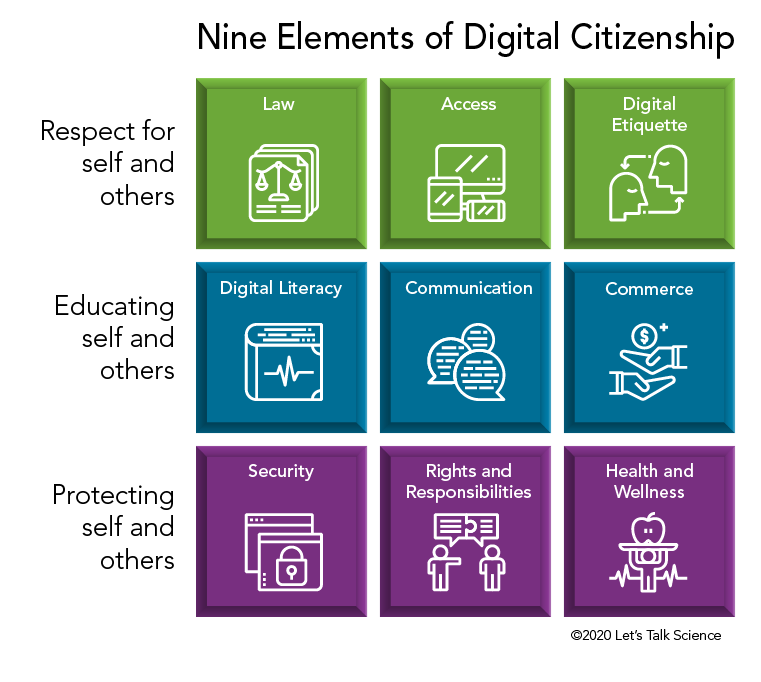
Respect for self and others
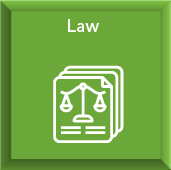
The legal element of digital citizenship is knowledge of the rights and restrictions that apply when using digital devices. Students should understand that online tools open people up to theft of personal and financial information, harassment and bullying. Students should also understand the expectations placed on them under Canadian copyright law . These include issues such as the proper use of images, proper citation methods, plagiarism and respecting the intellectual property of others.
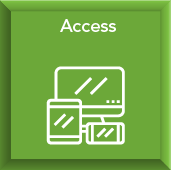
Not everyone has the same opportunities to use digital technologies. Digital citizens work to ensure access for everyone, regardless of their abilities, socio-economic status or location.
For students, this could mean donating their old smartphone or laptop to a charity instead of selling it or recycling it. It could also mean advocating for the establishment of “hot spots” or mobile wifi units in areas where there is need.
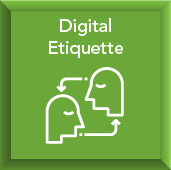
Digital Etiquette
Digital Etiquette, or “netiquette,” is an expectation of conduct for oneself and other digital technology users. Students learn how their use of technology affects other people. They also develop a sense of responsibility for their actions. Treat people online the way you would treat them in real life, and the way you would want to be treated. One way students can learn digital etiquette is by following the rules and expectations of websites they visit.
For students, this could mean thinking about how what they write, post or share could be interpreted. And how this could affect other people. It is important for students to realize that written messages may not convey the true intention of the author. Something that is intended as humour or sarcasm could be understood differently. This is because we cannot communicate feelings the same way online, as we do in real life.
Educating self and others
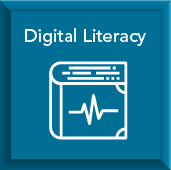
Digital Literacy
Digital Literacy encompasses reading, writing, and critical thinking as well as the use of digital technologies. Students should learn to select the best digital tool for the job, and to use that tool efficiently. Students should also learn to evaluate the accuracy, perspective and validity of online resources and social media content. Digital literacy includes both cognitive and technical skills.
For students, this could mean determining if an online resource is credible, or creating and uploading a video.
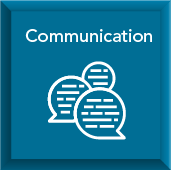
Communication
It is important to be able to use the right digital technology at the right time for the exchange of information. Students should learn when to use various forms of communication, such as text or social media. They should also learn to organize their thoughts so they can be understood by others.
Digital citizens recognize that in a digital environment, the best format and tool depends on what they want to communicate, for what purpose, and to whom. For example, using abbreviations or textspeak in instant messages or texts to friends is ok in that situation. But the same format may not be appropriate when communicating with potential employers. It is also important for students to consider which tool to use when communicating with a prospective employer or post-secondary institution. Organizations often lag behind the apps youth are using. It’s best for students to check official websites for preferred means of communication.
Digital citizens should also recognize that the information they share through the internet is often very difficult (or impossible) to delete. Employers often do background checks of applicants’ social media to get a better idea of “who they are” as individuals. When communicating with their friends, students should be conscious of this and not share information they would not want to be seen publicly.
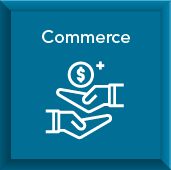
Commerce
Digital citizens know that purchasing items online comes with risks. Learning how to use e-commerce sites safely, ensuring these sites are legitimate, and protecting personal and financial information are essential parts of digital citizenship.
Students should be able to recognize and evaluate the risks associated with buying and selling online. They should also know how much of their personal and financial information they should share. Students should also recognize that things are rarely “free” on the internet. Sometimes the price is access to their personal information. Digital commerce is closely related to digital security.
Protecting self and others
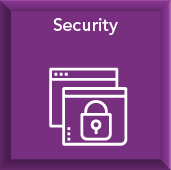
Security refers to the precautions people use to maintain their safety, and the safety of others, while using networked devices. In general, threats can come from access to personal or financial information by unauthorized people. It can also come from malicious software and viruses that damage or extract data. Digital citizens realize that when we are connected, we are all responsible for security. This means having software and applications to protect themselves against people who seek to exploit their vulnerabilities.
For students, this can mean understanding the need for strong passwords, and for keeping passwords confidential. Students should also develop other safe practices that help prevent the spread of viruses and other malicious software. These practices include the use of antivirus software. They also include developing safe-use practices like downloading from reputable sites only; not sharing or using bootleg software or music; and avoiding “off the beaten path” websites.
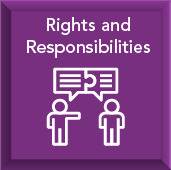
Rights and Responsibilities
Everyone who accesses the digital world has certain rights and privileges. Students should realize that while the online environment provides great opportunities, there are also dangers. When students encounter issues of concern online, they have a responsibility to report these to someone in authority, like a teacher or the police. Some of these issues could include cyberbullying, posting of inappropriate content or fraudulent activity. They also have the responsibility to provide support to other users and to help maintain digital equipment.
For students, this could mean supporting a peer to use a new app that has been introduced into the learning environment. Or protecting school-issued devices from damage or theft. It could also include the need to inform a trusted adult of inappropriate use of school-issued devices by another person. Or if they have concerns about another student’s activity, like sharing personal information with someone they haven’t met in person.

Health and Wellness
This refers to students’ physical and psychological wellbeing as it relates to the use of technology. Students should learn the importance of maintaining a balance between the online world and the real world. This helps ensure the opportunity for quality, in-person time with family and friends.
Students should be aware of the amount of time they spend online. Playing online games and engaging in various chat features can promote positive social interactions. However, sitting or lounging for long periods of time can have negative effects on students’ physical health. In some cases, students can even become addicted to their technology to the point where it affects their sleep patterns and behaviour.
Just as in the real world, online bullying has negative impacts on students' health, wellness and sense of self. Students should be provided with strategies to address incidents of cyberbullying, or to inform a trusted adult if they, or someone they know becomes a victim.
Although social interactions are essential to human well-being, many studies suggest a direct link between an increase in anxiety and depression in children and social networking sites use. Students should thus reflect on how their use of social media can affect their mood and mental health.
In Conclusion
In the real world, the development of citizenship skills and knowledge does not happen on its own. These are taught through both the authorized curriculum and the norms and expectations established in our cultures.
When it comes to digital citizenship, educators and other adults must lead by example. They must make the effort to incorporate digital citizenship into learning plans. Digital citizenship should also be included in extracurricular activities and in non school-related activities.
Because so much of their communication and learning happens online, students must be provided with opportunities to explore their digital world safely. They must also engage in discussions of what it means to be a digital citizen.
Promoting Responsible and Ethical Digital Citizens (2012)
This article from Education World is about promoting responsible and ethical digital citizens.
Digital Citizenship
This page from the British Columbia Ministry of Education includes eight modules that focus on digital citizenship as it pertains to educational settings.
Digital Citizenship in Saskatchewan Schools
This comprehensive document from Saskatchewan Education examines how digital literacy and digital citizenship connect to K-12 curricula.
Digital Citizenship lesson plans
This page from Common Sense Education has free lesson plans on digital citizenship for K-12.
Digital Citizenship.(n.d.) Nine Elements .
Heitin, L. (2016). What Is Digital Literacy? . Education Week.
Ribble, M., (2015). Digital Citizenship in Schools: Nine Elements All Students Should Know. (3rd ed.) Eugene, OR: International Society for Technology in Education.
Ribble, M. (2020). Digital citizenship is more important than ever . ISTE.org.
Related Topics
Youth and Digital Citizenship+ (Plus): Understanding Skills for a Digital World
Berkman Klein Center Research Publication No. 2020-2
93 Pages Posted: 14 Apr 2020
Sandra Cortesi
Harvard University - Berkman Klein Center for Internet & Society
Alexa Hasse
Berkman Klein Center for Internet & Society at Harvard University
Andres Lombana-Bermudez
Date Written: March 20, 2020
Digital citizenship has become a topic of growing importance among academics and policymakers alike, at the center of debate and theorization around the skills youth need to navigate and actively participate in our digital world. On a global level, a variety of stakeholders — including government, international organizations, nongovernmental organizations, and academia — have adopted the term to develop and shape formal and informal learning programs that aim to help youth address the challenges and embrace the opportunities the digital environment may present. Yet, there is little consensus as to the broad areas (e.g., safety and well-being, civic and political engagement, identity exploration), and skills within them, digital citizenship should encompass. In this spotlight, Youth and Media explores the concept of digital citizenship, providing an overview of the current dialogue surrounding the term, with a focus on several key questions. Why does digital citizenship matter? Why has the concept become central in discussions about youth (ages 12-18), education, and learning in the 21st century? In a world where the online and offline are increasingly blending, to what extent should we emphasize the role of the “digital” in “digital citizenship”? To what degree do youth feel connected to the term “citizen?” How is the concept of digital citizenship similar to or different from other concepts, such as digital literacy or 21st century skills? How should we approach these concepts to more effectively foster the skills youth need to thrive in today’s society? And to what extent have we as decision-makers, academics, and educators been successful at incorporating youth voices in the development, implementation, and evaluation of digital citizenship initiatives?
Suggested Citation: Suggested Citation
Sandra Cortesi (Contact Author)
Harvard university - berkman klein center for internet & society ( email ).
Harvard Law School 23 Everett, 2nd Floor Cambridge, MA 02138 United States
Berkman Klein Center for Internet & Society at Harvard University ( email )
1875 Cambridge Street Cambridge, MA 02138 United States
HOME PAGE: https://cyber.harvard.edu/people/ugasser
Do you have a job opening that you would like to promote on SSRN?
Paper statistics, related ejournals, cyberspace law ejournal.
Subscribe to this fee journal for more curated articles on this topic
Family & Children's Law eJournal
Immigration, refugee & citizenship law ejournal, educational technology, media & library science ejournal, human-computer interaction ejournal, innovation & geography ejournal, data science, data analytics & informatics ejournal, educational & instructional communication ejournal, information policy, ethics, access & use ejournal, political communication ejournal, libraries & information technology ejournal, educational & school psychology ejournal, libraries & media ejournal.
How to Teach Your Students the 9 Elements of Digital Citizenship
By andy minshew.
- July 11, 2019
What do screen time usage, internet safety, and plagiarism have in common? These topics all fall under the umbrella of digital citizenship.
We live in a world that is connected and, in some ways, defined by technology. To succeed in academics, and eventually in their career, all students need to learn how to navigate the digital world safely and responsibly. As an educator, you can help by teaching digital citizenship in your class.
What is Digital Citizenship?
The Internet as we know it now began to take shape in the early 1990s, and since then the digital world has become increasingly integrated in our daily lives.[13] Whether they’re surfing the web on a computer or playing games on their parent’s smartphone, many children use technology on a regular basis. That’s why teaching digital ethics is so important: to make sure students know how to use the Internet responsibly.
A broad definition of digital citizenship is the ability to use technology and the Internet in an appropriate manner. As technology continues to advance, so does the potential to abuse it (intentionally or otherwise).[8] Digital citizenship skills give students the right tools to engage with the digital world in ways that promote healthy online communities.
Because digital citizenship is such a wide-ranging topic, it can encompass a variety of concepts and actions. A few examples of digital citizenship include:
- Learning to type, use a mouse, and other computer skills
- Avoiding harassment or hateful speech while conversing with others online
- Encouraging yourself and others not to illegally download content or otherwise disrespect digital property
Exploring the 9 Elements of Digital Citizenship
Students live in a world where digital resources are everywhere, which is why the importance of including technology in education extends to all aspects of a student’s life. The International Society for Technology in Education (ISTE) outlines nine elements of digital citizenship to help students navigate online resources: [9]
- Digital access
- Digital etiquette
- Digital commerce
- Digital rights and responsibilities
- Digital literacy
- Digital law
- Digital communication
- Digital health and wellness
- Digital security
These nine elements form a guide for teaching students what they need to know to be safe and informed digital citizens.
Digital Access
Digital access involves the ability to connect with others or access information using technology. As a teacher, you can instruct students on how to find valuable and safe information on the Internet. You can also help children from disadvantaged communities use computers or other resources at school to increase their digital access.
Digital Etiquette
Digital etiquette is just what it sounds like: treating other Internet users with respect and avoiding inappropriate behavior. For elementary students, one of the most important digital etiquette principles is understanding the consequences of cyberbullying.
Digital Commerce
Digital commerce refers to buying and selling electronics responsibly. For the most part, elementary students do not need to learn or practice this element of digital citizenship. For middle or high school students, however, discussions around digital commerce can help them learn how to be better consumers or consider career paths related to digital sales.
Digital Rights and Responsibilities
Digital rights and responsibilities refers to the privileges that all students have while using the Internet, like freedom of speech.[10] It also involves a student’s duty to make sure that these rights remain available for everyone by treating other users fairly and respecting their privacy.
Digital Literacy
The definition of digital literacy is the ability to learn how to use technology and access information online.[12] A few examples of digital literacy include knowing how to use a mouse or how to find answers on a search engine.
Not all students start school with the same technological ability.[4] Teaching Internet skills in class can help bridge gaps in digital literacy.
Digital Law
Digital law encompasses the rules or guidelines set within an organization for using the Internet.[10] In your classroom, you could talk about preventing plagiarism or putting phones away in class to teach digital law.
Digital Communication
The options that students have for communicating online are greater than ever. Text, email, social media, and online games are all ways that children might digitally interact with others.[11] For this reason, it’s important to teach your students how to communicate safely and effectively online.
Digital Health and Wellness
This element of digital citizenship involves teaching students how to protect their psychological and physical well-being while using the Internet.[12] This could include practicing how to sit correctly in a chair while using the computer and avoiding too much screen time.
Digital Security
The ninth element of digital citizenship—digital security—involves teaching students how to take steps to stay safe online. Although the Internet can be an excellent resource, students need to know how to avoid viruses, scams, or strangers online. Internet safety lessons for children could include anything from why privacy online is important to what to do if they encounter a cyberbully or stranger.
Why Teach Digital Citizenship with Technology in the Classroom?
The benefits of digital citizenship for kids extend far beyond the individual.[8] When we help students develop healthy practices on the Internet, we’re also creating a better space for everyone they interact with. If your students use technology in class, digital citizenship curriculum is one of the best ways to help everyone make the most of their time online.
Because technology is so prevalent in schools, teachers often have to worry about how to prevent cyberbullying, cell phones disrupting class, and plagiarism.[1] Teaching digital citizenship can be one of the best ways to decrease these and other inappropriate behaviors at school.[14] As they become good digital citizens, students can use the Internet with a greater sense of self-awareness and better understand how to best use technology.
Teaching digital literacy and other citizenship skills can also help bridge digital equity gaps (or the “digital divide”) between students.[3] Not all students have the same level of access to technology at home. Students from under-resourced or marginalized communities often have fewer digital experiences in comparison to their peers.[4] When digital literacy is a core part of their education, the technological resources and lessons in school can help these students catch up with their classmates.
5 Digital Citizenship Activities and Tips for Elementary Students
For many children, technology is a part of their daily lives before they even begin school. That’s why it’s part of an educator’s duty to teach digital citizenship so students learn to interact in healthy ways with the online part of their world.
Use these digital citizenship game and lesson ideas to help elementary students develop essential skills for the wise and effective use of technology:
- Digital safety is important for everyone, but especially for young students. Teach your students internet safety tips, like how to keep personal information private or avoid talking with strangers online.[5]
- The earlier students learn know to use a keyboard and mouse, the better! Use your school’s technology lab to play typing games or teach students how to use a computer.
- Show students the variety of free resources they can use online, like Wikipedia or Google. Teach them not only how to access these resources but also how to use them safely.
- Cyberbullying can affect anyone, even elementary students. Brainstorm with your students how they can be respectful on the Internet and what to do if someone is bullying them.[6]
- To avoid plagiarism, teach older elementary students how to cite information that they find online.[7]
Ribble, M.S., Bailey, G.D., and Ross, T.W. Digital Citizenship: Addressing Appropriate Technology Behavior . Learning & Leading with Technology, September 2004, 32(1), pp. 6-9.[1]
Lenhart, A., Madden, M., Smith, A., Purcell, K., Zickuhr, K., and Rainie, L. Teens, Kindness and Cruelty on Social Network Sites: How American Teens Navigate the New World of “Digital Citizenship.” Pew Internet & American Life Project, November 2011, pp. 1-86.[2]
Shelley, M., Thrane, L., Shulman, S., Lang, E., Beisser, S., Larson, T., and Mutiti, J. Digital Citizenship: Parameters of the Digital Divide . Social Science Computer Review, 2004, 22(2), pp. 256-269.[3]
Robinson, L., Cotten, S.R., Ono, H., Quan-Haase, A., Mesch, G., Chen, W., Schulz, J., Hale, T.M., and Stern, M.J. Digital inequalities and why they matter. Information, Communication, & Society. 2015, 18(5), pp. 569-582.[4]
Code.org and Common Sense Media. Digital Citizenship . Retrieved from code.org: https://code.org/curriculum/course3/20/Teacher.pdf.[5,6]
Hunter Library Services. Plagiarism and Copyright . Retrieved from libguides.com: https://huntertafe.libguides.com/digitalcitizenship/plagiarism.[7]
Farmer, L. Teaching Digital Citizenship. Selected Topics in Education and Educational Technology, January 2010, pp. 387-392.[8]
Ribble, M. Essential elements of digital citizenship. Retrieved from iste.org: https://www.iste.org/explore/ISTE-blog/Essential-elements-of-digital-citizenship.[9]
Ribble, M. Passport to Digital Citizenship: Journey Toward Appropriate Technology Use at School and at Home . Learning & Leading with Technology, December 2008, 36(4), pp. 14-17.[10]
Tan, T. Educating Digital Citizens. Leadership, September 2011, 41(1), pp. 30-32.[11]
Hollandsworth, R., Dowdy, L., and Donovan, J. Digital Citizenship in K-12: It Takes a Village. TechTrends, July 2011, 55(4), pp. 37-47.[12]
GCF Global. Internet 101: What is the Internet? Retrieved from just.edu.jo: www.just.edu.jo/~mqais/cis99/PDF/Internet.pdf.[13]
Reykdal, C. Cyberbullying and Digital/Internet Safety. Retrieved from www.k12.wa.us: https://www.k12.wa.us/student-success/health-safety/school-safety-center/z-index/cyberbullying-and-digitalinternet-safety.[14]
More education articles

Celebrating Juneteenth 2024: Children’s Books and Activities for Families and Educators

MacKenzie Scott’s Yield Giving Awards Waterford.org a $10 Million Grant
Personalizing one state’s digital citizen experience
Jul 9, 2024
Government agencies strive to match the online user experience of the private sector, yet citizens often face fragmented digital interactions across multiple state websites. In a new FedScoop interview, Chris Gianutsos, managing director of digital at EY, discusses a collaboration between EY and Adobe to modernize one state’s digital platforms.
EY began the project with three major goals: improving infrastructure, enhancing content management, and delivering personalized, consistent experiences for customers across agencies. “By having a centralized digital platform, you get that consistency of customer experience,” says Gianutsos. “And you get to share the data across agencies.”
According to Gianutsos, the state chose Adobe because of its significant commercial experience and continuous product development, which promised a lower total cost of ownership and better long-term benefits. Adobe’s web CMS platform, Experience Manager, served as the foundation for content updates, while Adobe’s Experience Platform provided data and personalization tools. These centralized digital platforms “offer consistency, shared data and the ability to leverage innovations across agencies,” says Gianutsos.
Ultimately, the collaboration between EY and Adobe aims to deliver tangible improvements, such as faster content updates and reduced website maintenance. A pilot project focused on improving self-service options for driver’s license eligibility, reducing call center inquiries, also showed promising early results.
In addition, Gianutsos shares lessons for other public sector leaders considering similar modernization efforts and emphasizes the value of alliances. “Alliances bring together the best of multiple partners, all of whom may have a slightly different experience or slightly different point of view on what is working and what isn’t,” says Gianutsos. “And when an agency or state government uses a combination of providers for something like this, they really are getting the best of breed not just from a technology solution but from a thinking standpoint.”
For more information about the power of technology alliances, visit ey.com/en_us/alliances/adobe .
This video panel discussion was produced by Scoop News Group, for FedScoop and StateScoop, and underwritten by EY.
Related Videos

Fighting fraud with modern identity verification platforms

Ensuring identity-proofing works for all populations

How USDA’s cloud integration advances its mission goals
More like this, how the army corps of engineers is using ai to modernize and improve operations, how the dept. of navy is using data and ai to improve decision-making, how the army is using data science and ai to advance military capabilities, top stories, chevron’s downfall highlights need for clear artificial intelligence laws, ftc modernization, enforcement efforts jeopardized by cuts, officials say, transportation department doubles down on securing gps tech.

Wiper NEC wants MP Farah Maalim expelled over remarks on Gen Z protesters

A screengrab of Daaadab Member of Parliament Farah Maalim (MP) speaking to Citizen TV on June 20, 2023.
The Wiper party’s National Executive Committee (NEC) now wants Dadaab Member of Parliament Farah Maalim kicked out of the opposition-affiliated political outfit over inflammatory remarks he recently made against youthful Kenyan protesters in a video that has now gone viral and elicited anger online.
In the undated video, Maalim, while speaking in the Somali dialect, said that if he were the President of Kenya, he would have " slaughtered 5,000 Gen Z protesters ” during the recent wave of anti-Finance Bill 2024 demonstrations.
The Kalonzo Musyoka-led party, in a statement to newsrooms on Wednesday, distanced itself from the remarks made by the MP – who is also the deputy party leader - further calling for his removal from all Parliament committees.
The party’s National Delegates Convention (NDC) is now set to make a decision on the NEC’s recommendations
“Regarding the conduct and statements attributed to Deputy Party Leader Farah Maalim, let it be known clearly that the Wiper Democratic Movement party distances and disassociates itself from these remarks,” read the statement.
“They go against our guiding principles and values as a party. NEC’s decision is that Farah Maalim be de-whipped from all Committees in Parliament including the Speaker’s Panel. NEC also recommends expulsion from the Party to the National Delegates Convention (NDC) – the supreme organ of the party.”
Maalim was also among other Wiper lawmakers censured for going against the party decision in the contentious Finance Bill, 2024 vote when it came on the floor of the House.
“On the conduct of party members, first, we believe strongly in the fidelity of political parties, their mission, vision and identity. It is in the public domain that three of our members, namely, Farah Maalim – MP for Dadaab, Doris Donya Toto - Kisii Women Rep, John Okano Bwire – MP for Taveta and Abubakar Ahmed - Nominated MP, have repeatedly gone against the party position,” added the statement.
“Their latest transgression was voting Yes and Abstaining – in the case of Donya - for the now withdrawn Finance Bill, 2024. The four received invitations to attend today’s NEC meeting. They all failed to attend nor have offered their apologies. Their cases have been referred to the Party’s Disciplinary Committee.”
This comes after the National Cohesion and Integration Commission (NCIC) also summoned the MP to appear before it on Thursday to shed light on the controversial remarks.
Want to send us a story? SMS to 25170 or WhatsApp 0743570000 or Submit on Citizen Digital or email [email protected]
Leave a Comment
No comments yet.
latest stories

Santa Clarita Valley's #1 Local News Source
The evolution of academic assistance: pre-written essays for sale in the digital age, sponsored post.
- July 8, 2024
Writing used to be a solitary job where writers would sit at the table in their studies to scribble away imaginary scenarios, people, and events. Today, writing is much more collaborative with writers working out of cafes and dormitories with other students. Academic writing has seen a lot of change in the recent days, thanks to the internet and the AI.
In this blog, we will take a look at academic assistance for students and how pre-written essays for sale are changing the landscape.
Evolution of Academic Assistance
The history of academic assistance for students has been nothing short of a saga. In this section, we will take a look at three major phases in the evolution of academic assistance and how it led to pre-written essays for sale .
Peers and Siblings
In the beginning, meaning before the internet, students do not have any way to seek help from others, save their peers and siblings with some experience. This was easily accessible but it was crude with no guarantee of success and a lot of chances of hit and miss.
AI Essay Writing Tools
With the advancement of the internet and writing tools, AI took center stage with amazing capabilities and scope. But the nascent hype has died down as teachers and instructors have found out ways to tackle AI in essays and papers.
Pre Written Essays for Sale
Today, essays for sale offer amazing value to students in terms of their scope, range, pricing, availability, and so on. Let’s take a look at some of the salient features that make them the ultimate rendition of academic assistance for students in schools and colleges.
Immediate Access
The first thing that is great about these pre-written essays for sale is the first part of their name. Since they are already finished, students do not have to wait for hours or days, and even pay a premium, to get one of these. All it takes is to go to the relevant website, find the right essay, pay for it, and that’s it. From start to finish, it takes no more than a couple of minutes!
Wide Range of Topics
Companies dealing with pre-written essays for sale have dedicated teams for researching the market. They anticipate the demand and come up with topics and titles that cover all the bases for students across the world. That’s why you will find a wide range of amazing essays and papers, available just a download away.
Affordable Pricing
Students do not have surplus cash lying around the dorm to spend on food and essentials, let alone buying essays from essay writing companies. They charge a premium on custom orders and take at least a day to write a 500-word essay. This is where pre-written essays for sale shine as they are available for a fraction of the price with all the benefits.
Lucrative Add-Ons
You might have a notion that once you download a pre-written essay, you are on your own. That’s not true as many reputed companies offer lucrative add-ons and perks to sweeten the deal. For instance, for a nominal price, you can ask for essay editing services. This will allow you to get all the changes in the essay without doing anything yourself.
Things to Look For Before Buying Pre-Written Essays for Sale
Although pre-written essays for sale are great, you need to do some due diligence before paying your hard-earned cash. Here are some of the things you should check before moving forward with the purchasing of an essay online:
- The essay should be written by professional writers with experience in academic writing and editing.
- There should be an established brand behind the development of pre-written essays for sale.
- You should look for perks and benefits, such as title pages, free formatting, and downloadable plagiarism reports in order.
- The company has reviews and testimonials from other customers so that you know they are for real.
Wrapping Up
Academic assistance for students in the digital age has come a long way, from its humble roots. Today, students can order a complete essay from the comfort of their homes and get one in seconds. We have covered some aspects in the blog for your assistance in finding the right pre-written essay for sale.
Related To This Story
Housing market in henderson, nevada [2024] , 10 must-do things in toronto , pros and cons of living in virginia beach , 6 best essay writing services for students – legit paper writing services online, the benefits of custom t-shirts for small business marketing, the power of a strong visual brand identity and the key steps to create it , latest news.

EDC, CEO part ways; VP promoted

Beryl was not a surprise, but it battered southeast Texas electric grid anyway

Hart Park staff saddened by bison’s death

Elon Musk defeats $500 million lawsuit over Twitter layoffs

RNC’s draft 2024 platform includes revoking China’s preferred trade status
Sign up for the, morning rundown.
Filled with the top stories to start your day, and emergency news alerts.

25060 Avenue Stanford, St. 141
Valencia, CA, 91355
Main Desk: 661-259-1234
Newsroom: 661-255-1234
Advertising: 661-287-5564
Have a news tip? Let us know!
News Sections
- Coronavirus
- Environment
- Politics & Government
More Sections
- Video + Podcasts
- Sunday Signal
- Subscribe to Print
- Classified Ads
- Event Calendar
- Digital Fellowship
- Publications
National Strategy for Digital Transformation in Guinea Bissau
Support Guinea-Bissau's digital growth through a comprehensive transformation strategy, enhancing public sector digitalisation, governance, and citizen services by 2030.
- Share on Twitter
- Share on LinkedIn
- Share on Facebook
The project objective is to create a comprehensive, effective strategy and roadmap, promoting public sector digitisation, improving citizen service delivery, and enhancing digital governance. The strategy will assess the current situation, outline the government's vision and objectives for digital transformation, set concrete yearly targets with responsible institutions, and include a budget for implementation. The accompanying Roadmap will detail actions, deadlines, and resources needed up to 2030, and will be publicly presented through a workshop. The work will be conducted locally to ensure a deep understanding of the context and effective collaboration with local stakeholders.
Develop Carrying out an in-depth analysis of the government's current digital capabilities
Collaborate with stakeholders to develop an integrated strategy that promotes the digitalisation of the entire public sector.
Align the strategy with the country's National Development Plan and other strategic government documents.
Validate the strategy through consultations with stakeholders and PIU experts.
Draw up a roadmap, including time frames, assigning responsibilities and identifying the necessary resources.
Publicly present the study at a workshop.
Disseminate the strategy to all interested and relevant parties.
Outputs D1. Guinea-Bissau's Integrated Citizen-Centred Digital Transformation Strategy. D2. The roadmap for this Strategy (detailed implementation plan). D3. The Strategy and Roadmap validation report. D4. Holding a national workshop to present the strategy and roadmap to the public. D5. Communication materials to disseminate the Strategy and Roadmap.
Project Manager

Beatriz Lanza
Related content, national strategy for digital governance in sao tome and principe.
05 Jan 2020
- Institutions
Artificial Intelligence and Development: the Missing Link
09 Jul 2024, 10:00 - 11:00
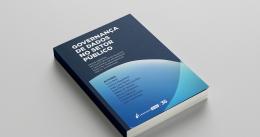
“Governance of Data in the Public Sector” Book has been Released
02 Jul 2024
WEBINAR | "Double-Edged Accountability: Exploring how Mechanisms Disrupt and Reinforce Power Asymmetries in Global Health governance"
18 Jul 2024, 20:00 - 21:30
- Health and well-being
Digital Citizenship Essays
Analyzing and improving school districts’ community partnerships and communication strategies for equity, inclusion, and digital citizenship, popular essay topics.
- American Dream
- Artificial Intelligence
- Black Lives Matter
- Bullying Essay
- Career Goals Essay
- Causes of the Civil War
- Child Abusing
- Civil Rights Movement
- Community Service
- Cultural Identity
- Cyber Bullying
- Death Penalty
- Depression Essay
- Domestic Violence
- Freedom of Speech
- Global Warming
- Gun Control
- Human Trafficking
- I Believe Essay
- Immigration
- Importance of Education
- Israel and Palestine Conflict
- Leadership Essay
- Legalizing Marijuanas
- Mental Health
- National Honor Society
- Police Brutality
- Pollution Essay
- Racism Essay
- Romeo and Juliet
- Same Sex Marriages
- Social Media
- The Great Gatsby
- The Yellow Wallpaper
- Time Management
- To Kill a Mockingbird
- Violent Video Games
- What Makes You Unique
- Why I Want to Be a Nurse
- Send us an e-mail
Walmart faces class-action lawsuit over 'deceptive' pricing in stores
Walmart must face a class-action lawsuit claiming the multinational retail giant used inaccurate price labels, according to a ruling to a federal appeals court on July 3.
The court order, issued by the 7th U.S. Circuit Court of Appeals in Chicago, opens the door for consumers to prove that the company has violated multiple consumer protection laws.
At the heart of the issue is that the inaccurate prices in Walmart stores constitute a “bait-and-switch” pricing scheme in which purchase prices are higher than those posted on store shelves.
The lawsuit was filed by an Ohio resident named Yoram Kahn. In August, 2022, Kahn purchased multiple items from a Walmart location in Niles, Illinois, and found a 10-15% markup above the listed priced. Kahn’s subsequent lawsuit alleged that similar price discrepancies were found at Walmart locations in Florida, Indiana, Maryland, New Jersey and New York.
The lawsuit also noted that a 2012 California court ruling fined the company $2 million for “violating a 2008 ruling requiring it to resolve pricing errors at checkout,” as well as two North Carolina-based locations being fined in 2021 for “repeated and excessive scanning charges” that caused excessive charges on purchased items.
In June 2024, Walmart agreed to pay a $1.64 million settlement to customers from its New Jersey locations for “allegations that the chain repeatedly engaged in unlawful unit pricing practices.”
Kahn’s legal team argued it was unreasonable for the average consumer to keep track of the discrepancies between the prices listed on shelves and potentially adjusted checkout prices.
“Who does that?” Judge David Hamilton wrote in the ruling. “For obvious reasons consumers will not undertake such audits.”
USA TODAY has reached out to Walmart for comment.
Walmart testing new digital labels
Last month, Walmart announced it was testing new digital shelf labels that would manage pricing of the store’s products.
Walmart to change price displays: What to know about digital shelf labels
According to a company spokesperson , the digital labels would allow Walmart “to update prices at the shelf using a mobile app, reducing the need to walk around the store to change paper tags by hand and give us more time to support customers in the store.”
Max Hauptman is a Trending Reporter for USA TODAY. He can be reached at [email protected]

IMAGES
VIDEO
COMMENTS
In conclusion, digital citizenship is a very important part of our lives. It helps us to stay safe online, respect others, and use digital tools in a positive way. By understanding and following the rules of digital citizenship, we can make the internet a better place for everyone. Remember, being a good digital citizen is like being a good ...
Conclusion: With the rise of technology use, Digital Citizenship Education is very important because it teaches citizens to use technology in order to engage respectfully online, to find reliable online sources and to avoid the violation of human rights. This can be achieved with schools and businesses implementing programs which will encourage ...
Abstract. The significance of digital citizenship necessitates consideration in the context of an ever-evolving digital age. Digital citizenship is crucial in the digital age. This essay explores ...
Submit an Essay Submit a Letter to the Editor ... True digital citizenship must be developmentally scaffolded and dynamic because the environment online is ever-changing. It will also necessitate ...
Youth and Digital Citizenship+ (Plus): Understanding Skills for a Digital World — by Sandra Cortesi, Alexa Hasse, Andres Lombana-Bermudez, Sonia Kim, and Urs Gasser — maps the current discourse around youth (ages 12-18) and digital citizenship. The report focuses on several key questions: Why has the concept of digital citizenship become ...
Digital citizenship refers to the responsible enforcement of smart and safe social media habits. Staying safe on social media is just as important for adults as it is for children. In fact, one in five Americans have been subjected to severe online harassment according to a 2017 Pew Research poll . "A digital citizen is defined as a person ...
Digital citizen. adheres to guidelines that govern the ethical and responsible use of technology; acts responsibly in all relationships and interactions in the digital world;
More precisely, the digital citizenship is a new developmental stage of the society and technology that is associated with the impact of digital and communication technologies (Searson, Hancock, Soheil, & Shepherd, 2015). The Internet becomes a factor of socialization and modernization of education changing the very paradigm of acquiring ...
The experience of being a digital citizen is fundamental in providing students with the knowledge, skills, strategies and global competencies they need to be successful today, and in the future. Digital citizenship needs to be embraced by educators as a way of thinking - and incorporated, whenever possible, into any type of existing curriculum.
Many accounts of digital citizenship have emphasized its empowering nature and suggested a shift towards enhanced agency by citizens and a democratizing trend in state-citizen relations. However, as contemporary governance becomes increasingly centered on the collection and analysis of personal data, the age of "datafication" requires us to ...
Activity 2: Creating a Campaign - Students work in groups to create a digital campaign promoting kindness and respect online. They could use videos, posters, or social media to spread their message, discussing the impact of positive behavior on the digital community. 2. Protecting Personal Information.
Chapter 1: Introduction to Digital Literacy Cheryl Brown. Overview. In this chapter, you will be introduced to the concept of digital literacy and what new skills are needed in order to engage with the digital world responsibly and effectively.Drawing on your own digital experiences you will think about your digital literacy and digital footprint, developing positive strategies to proactively ...
In this commentary, the authors move beyond digital literacy and take up the question of what digital citizenship means and looks like in the context of the COVID-19 pandemic. To engage with questions of ethical practice, the authors begin with the International Society for Technology in Education framework for digital citizenship.
A good digital citizen protects their personal information, uses good judgment and treats others with respect. Whether you're posting on social media, sending an email or commenting on an online discussion, practicing good digital citizenship makes our online world a more welcoming place for everyone.
Teaching digital citizenship in the classroom. By teaching students the various aspects of digital media literacy from an early age, educators will start students on the road to active and responsible digital citizenship. As digital citizens, students should have the ability to access, use, understand and engage with media (including online communities); apply critical thinking to all the ...
This study explored how school leaders make sense of and address digital citizenship as defined by Ribble (2011), and investigated what successes and challenges school leaders
As part of the certificate's curriculum, I. instruct teachers on digital citizenship, or "norms of appropriate, responsible behavior with. regard to technology use" (Common Sense Media). The aim of this instruction is to create. teachers ready to safely and responsibly engage students in the digital world.
Digital citizenship encompasses the values, knowledge, and behaviors individuals need to navigate the digital landscape responsibly and ethically. It goes beyond technical proficiency and delves into the realm of digital ethics, online safety, privacy, and responsible digital engagement. In an increasingly interconnected world, understanding ...
Digital citizenship is the appropriate and responsible use of the internet, computers and digital devices. Teaching digital citizenship is more than just having students follow rules, policies and procedures. Teaching digital citizenship helps to ensure that students think critically, behave safely, participate responsibly, and maintain their ...
Digital citizenship has become a topic of growing importance among academics and policymakers alike, at the center of debate and theorization around the skills youth need to navigate and actively participate in our digital world. On a global level, a variety of stakeholders — including government, international organizations, nongovernmental ...
The International Society for Technology in Education (ISTE) outlines nine elements of digital citizenship to help students navigate online resources: [9] Digital access. Digital etiquette. Digital commerce. Digital rights and responsibilities. Digital literacy. Digital law.
Citizenship has long been part of our curricular objectives, but students need guidance as they wade through a world connected 24-7 behind screens that allow you to be anyone and say anything. Our classrooms should provide a space where we can openly discuss issues facing students in the digital realm and discuss strategies to handle those issues.
Government agencies strive to match the online user experience of the private sector, yet citizens often face fragmented digital interactions across multiple state websites. In a new FedScoop interview, Chris Gianutsos, managing director of digital at EY, discusses a collaboration between EY and Adobe to modernize one state's digital platforms.
"On the conduct of party members, first, we believe strongly in the fidelity of political parties, their mission, vision and identity. It is in the public domain that three of our members, namely, Farah Maalim - MP for Dadaab, Doris Donya Toto - Kisii Women Rep, John Okano Bwire - MP for Taveta and Abubakar Ahmed - Nominated MP, have repeatedly gone against the party position," added ...
The essay should be written by professional writers with experience in academic writing and editing. There should be an established brand behind the development of pre-written essays for sale.
Transforming Idaho Government Meet the partner behind your state and local services and learn how the Tyler Idaho team is making a difference for their fellow Idahoans. Visit our new website Q2 Partner Spotlights: Idaho State Tax Commission The Idaho State Tax Commission worked with Tyler Idaho to modernize its tax payment portal just in time for April's Tax Day. The new payment portal ...
The project objective is to create a comprehensive, effective strategy and roadmap, promoting public sector digitisation, improving citizen service delivery, and enhancing digital governance. The strategy will assess the current situation, outline the government's vision and objectives for digital transformation, set concrete yearly targets ...
Digital Citizenship Essays. Analyzing and Improving School Districts' Community Partnerships and Communication Strategies for Equity, Inclusion, and Digital Citizenship. Introduction Overview of the Topic Considering an emphasis on equality, inclusiveness, and digital citizenship, this assignment intends to investigate assessing and enhancing ...
If the address matches an existing account you will receive an email with instructions to retrieve your username
Walmart testing new digital labels. Last month, Walmart announced it was testing new digital shelf labels that would manage pricing of the store's products.. Walmart to change price displays ...